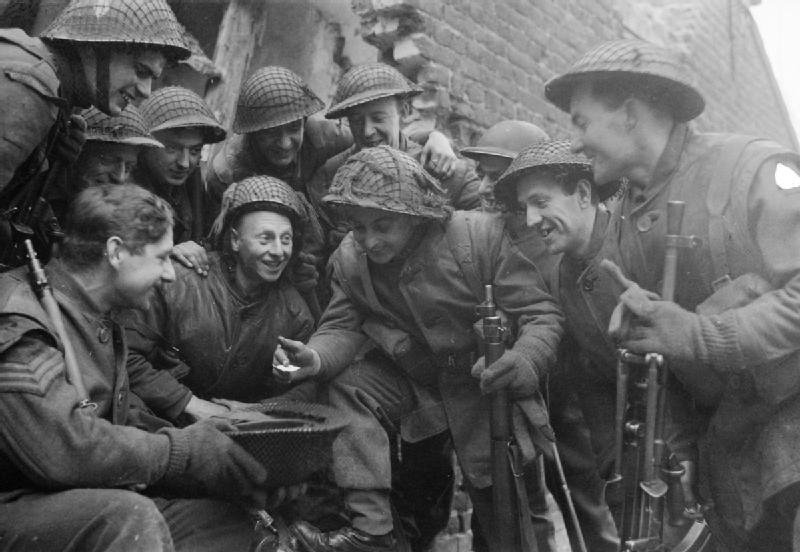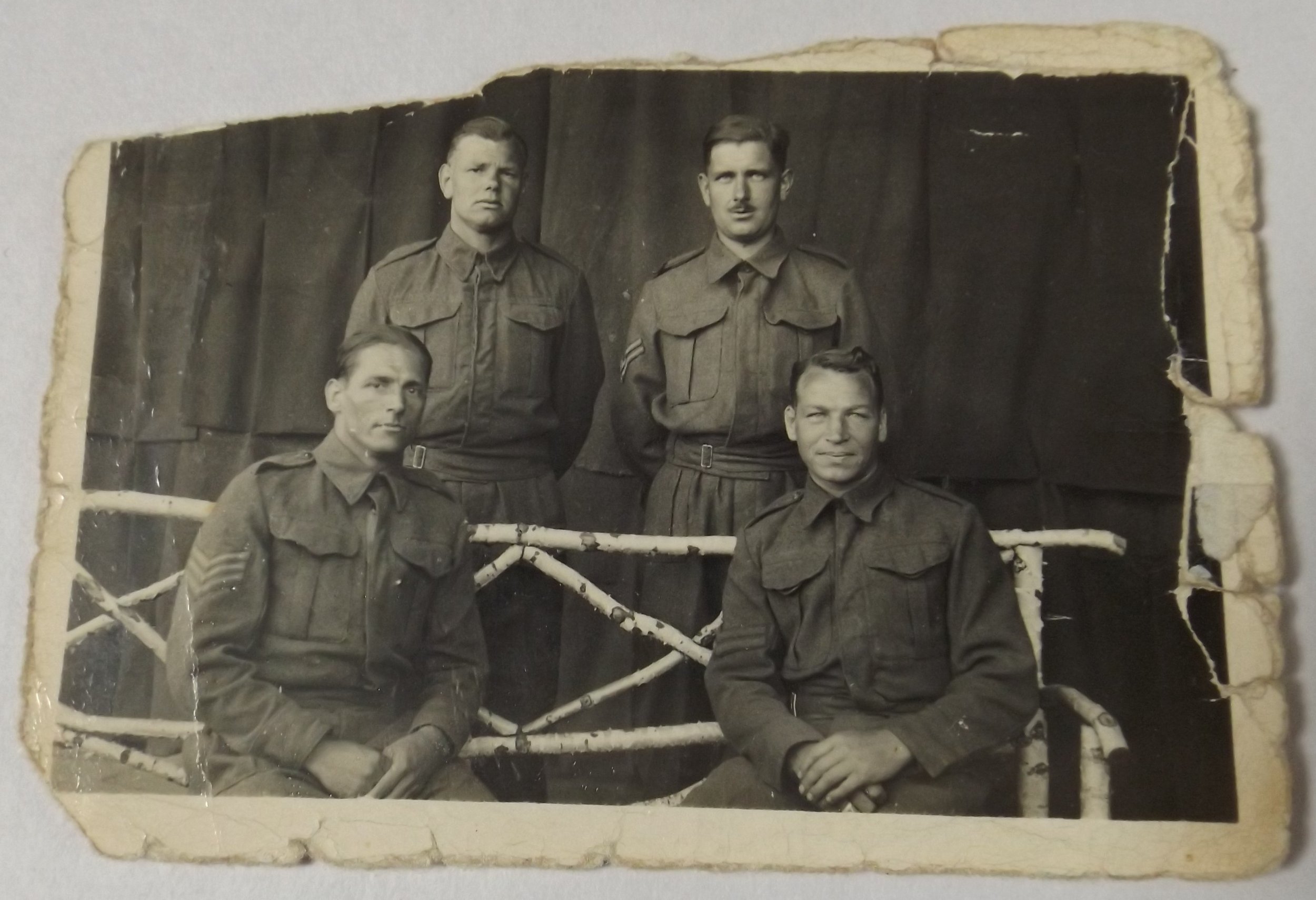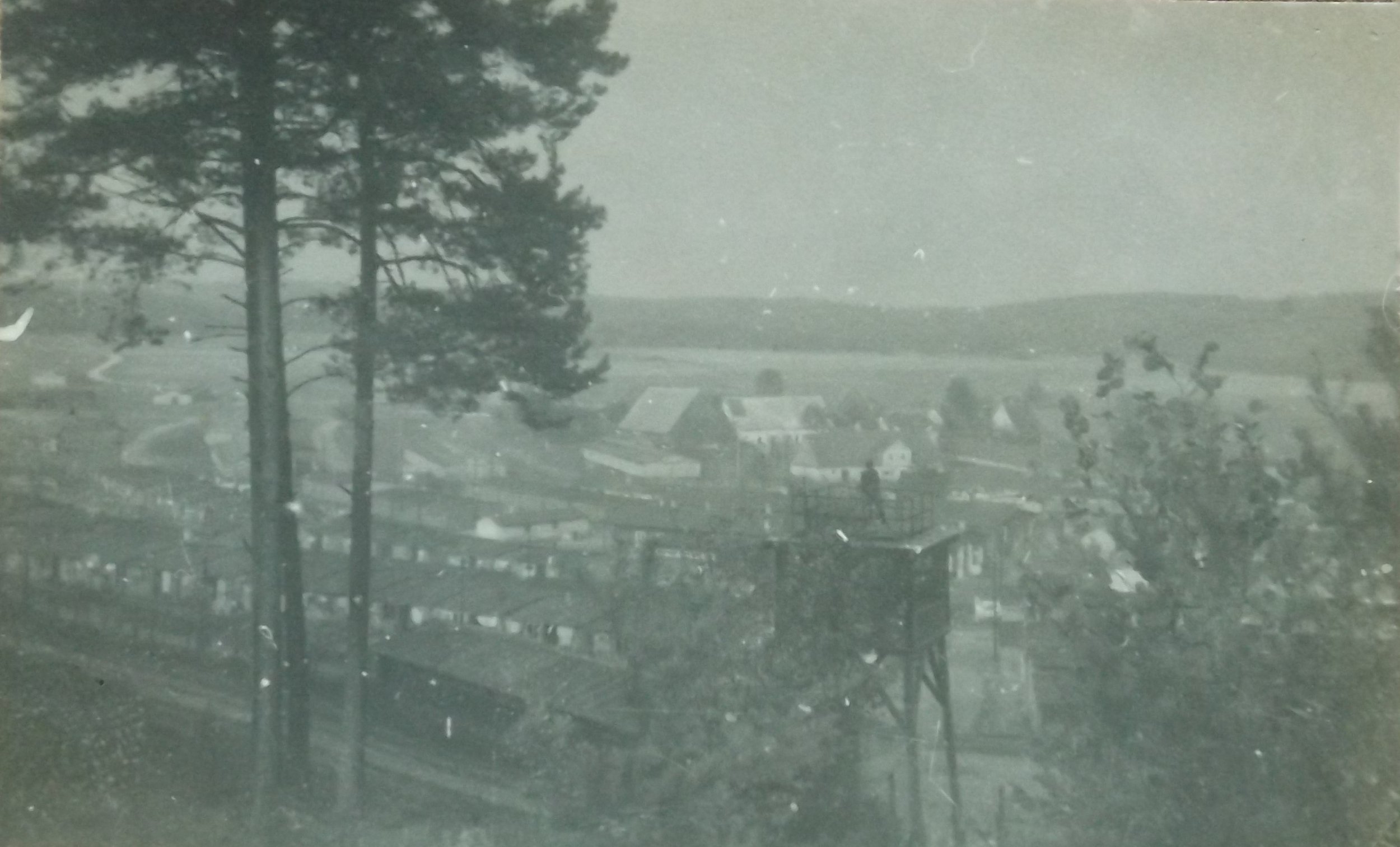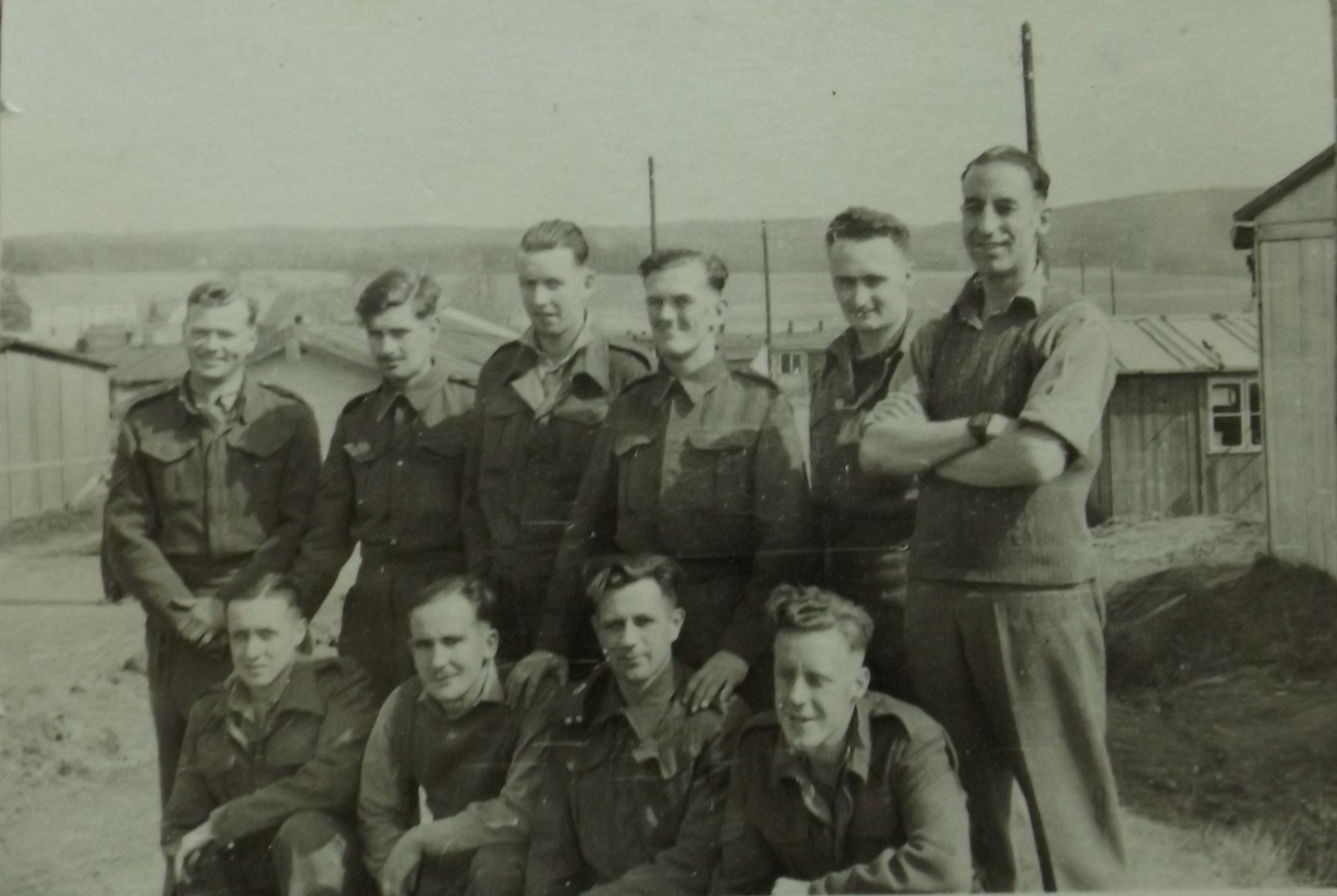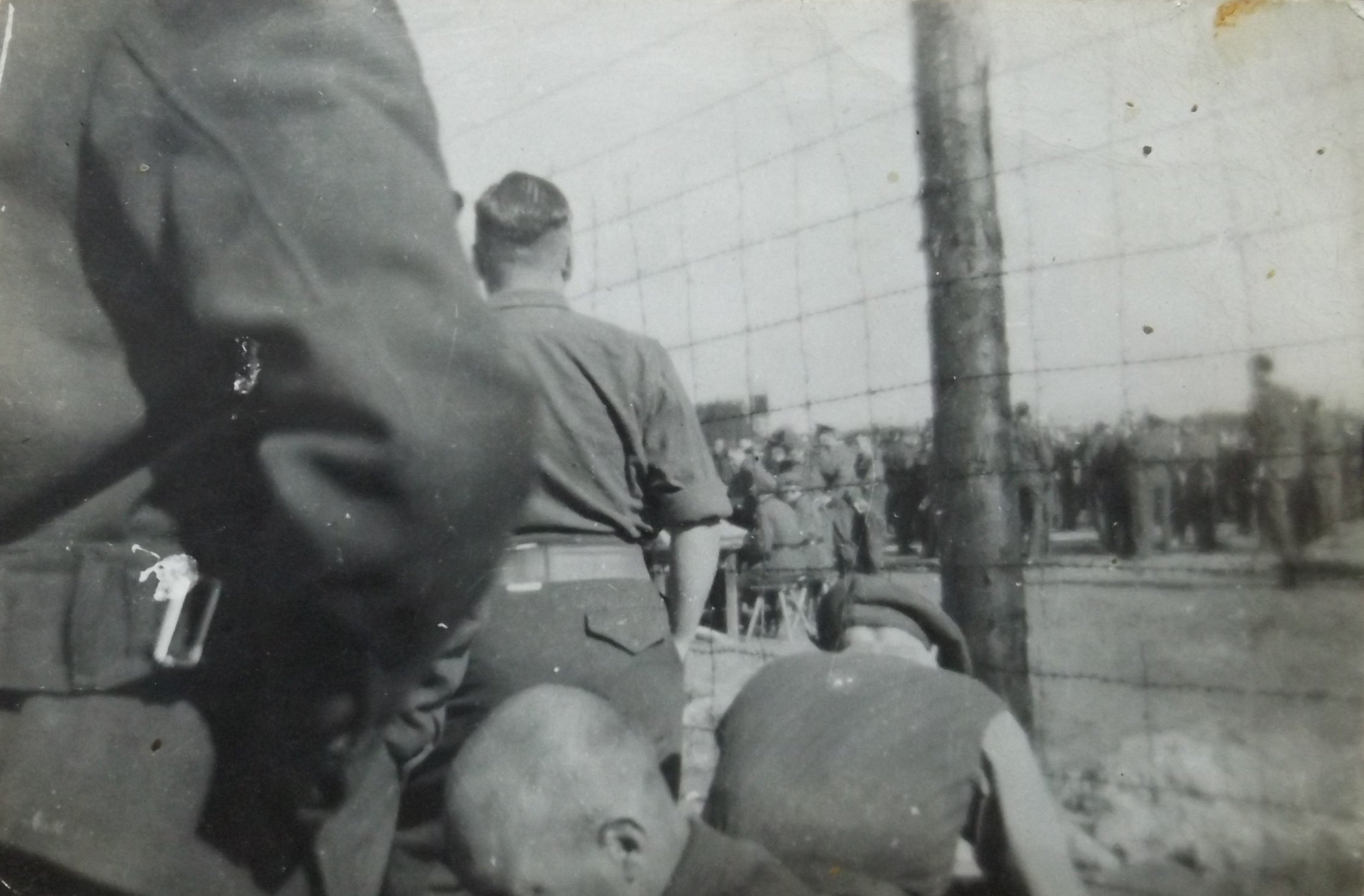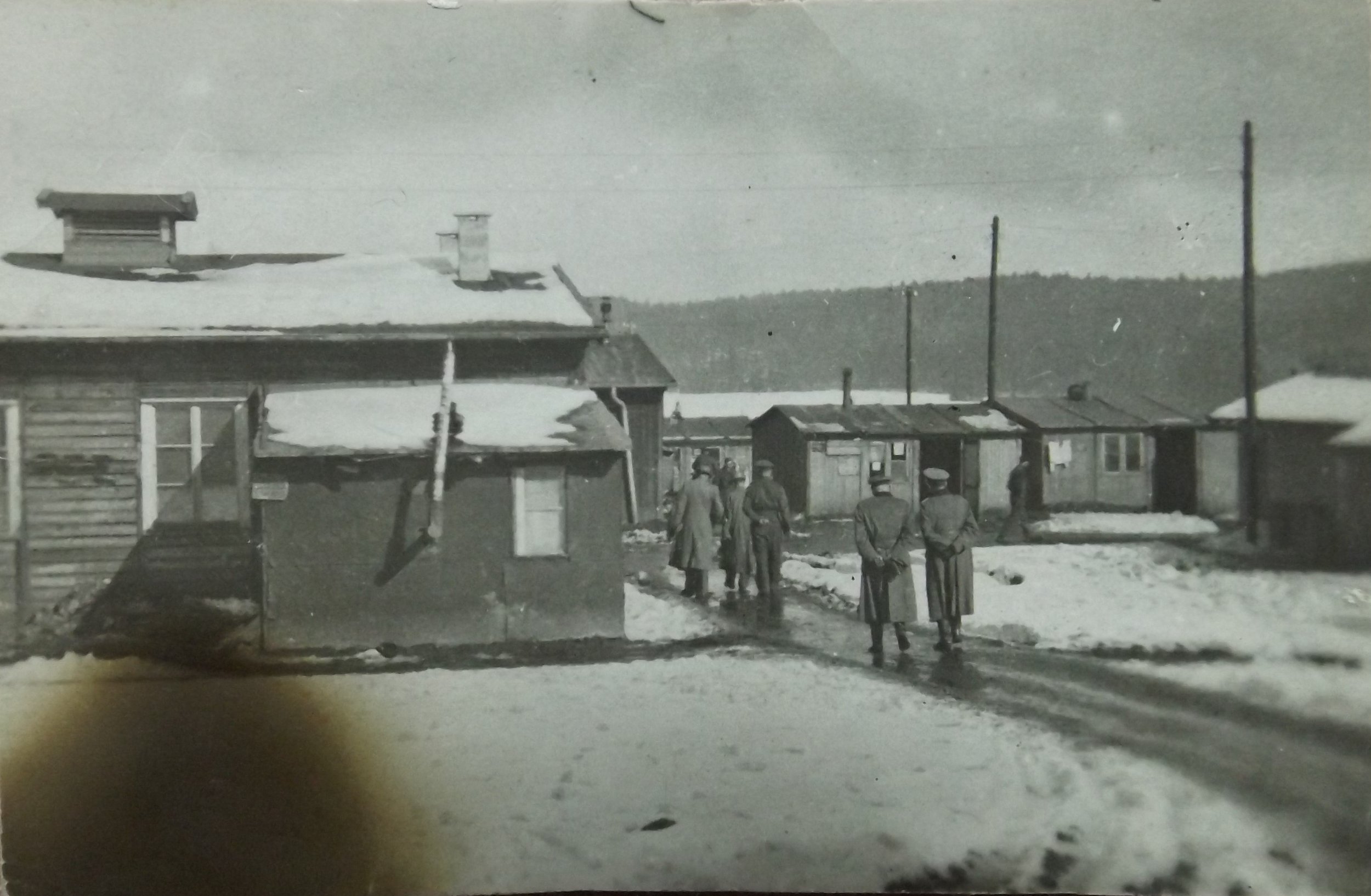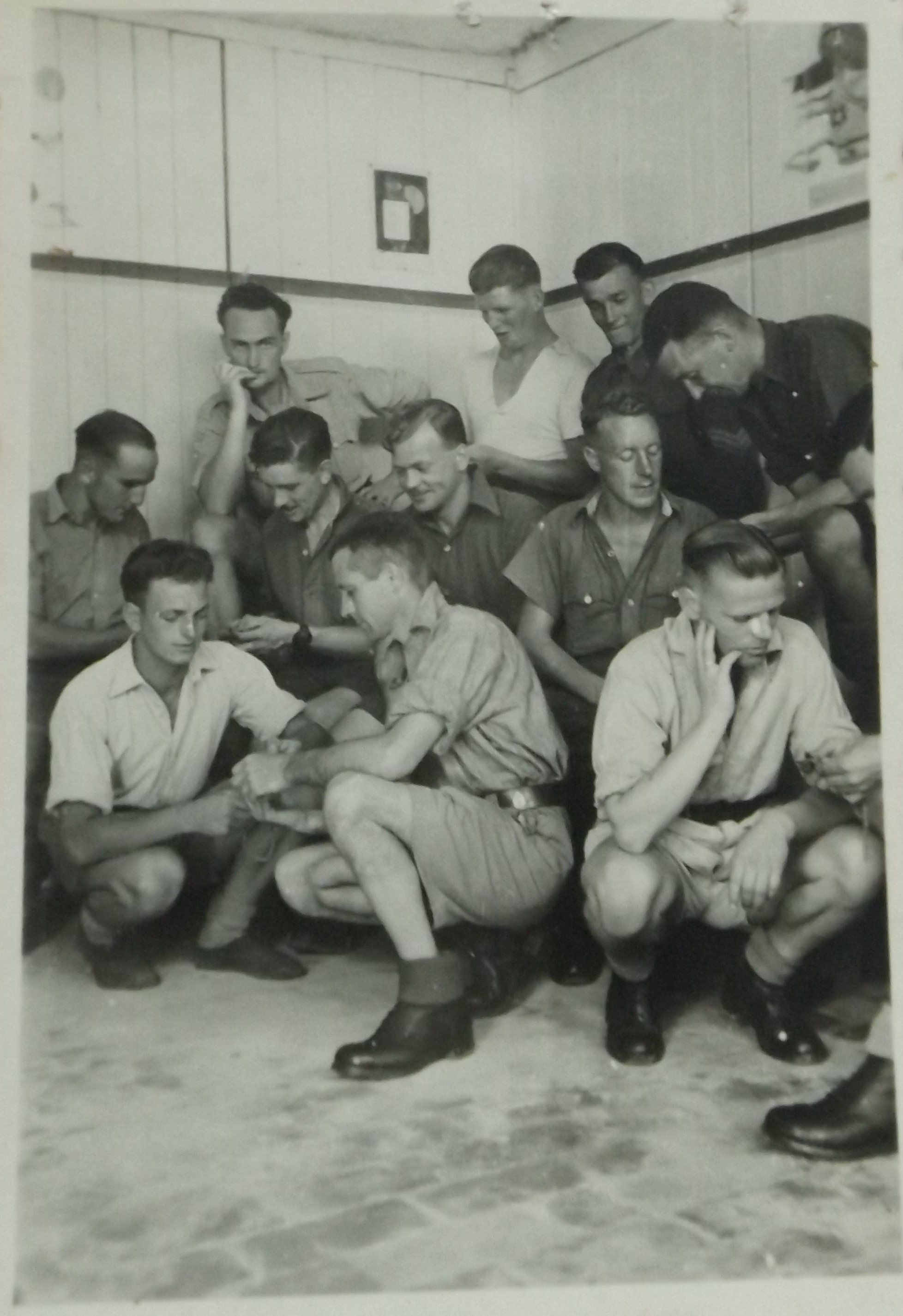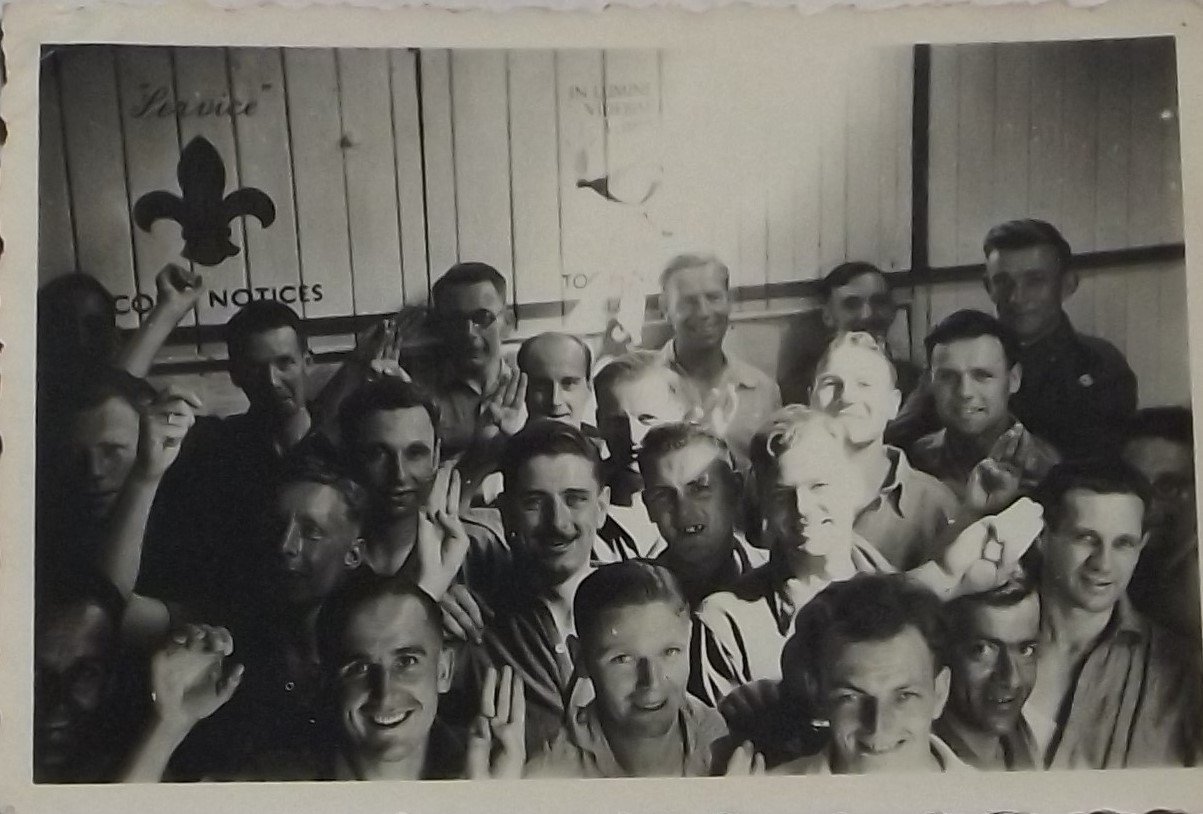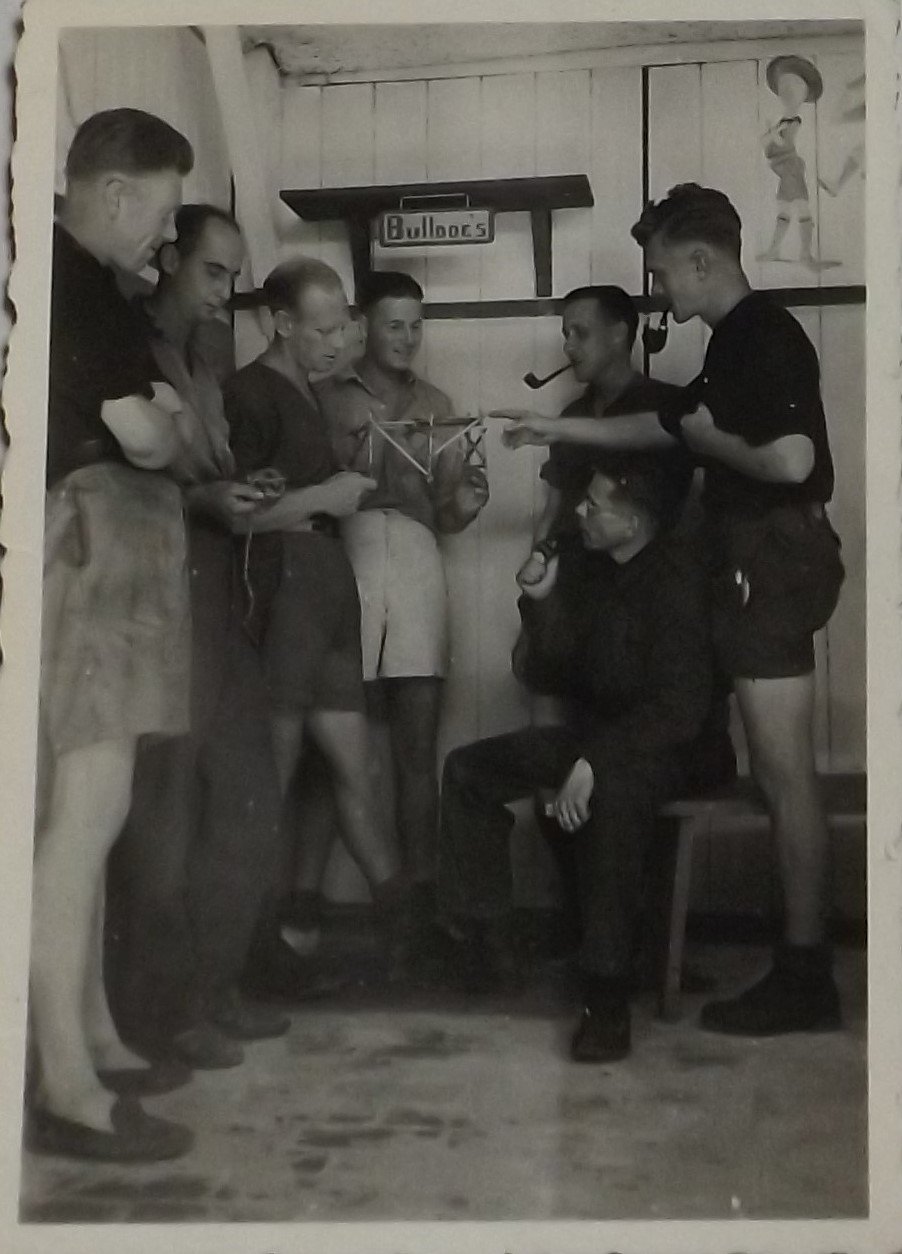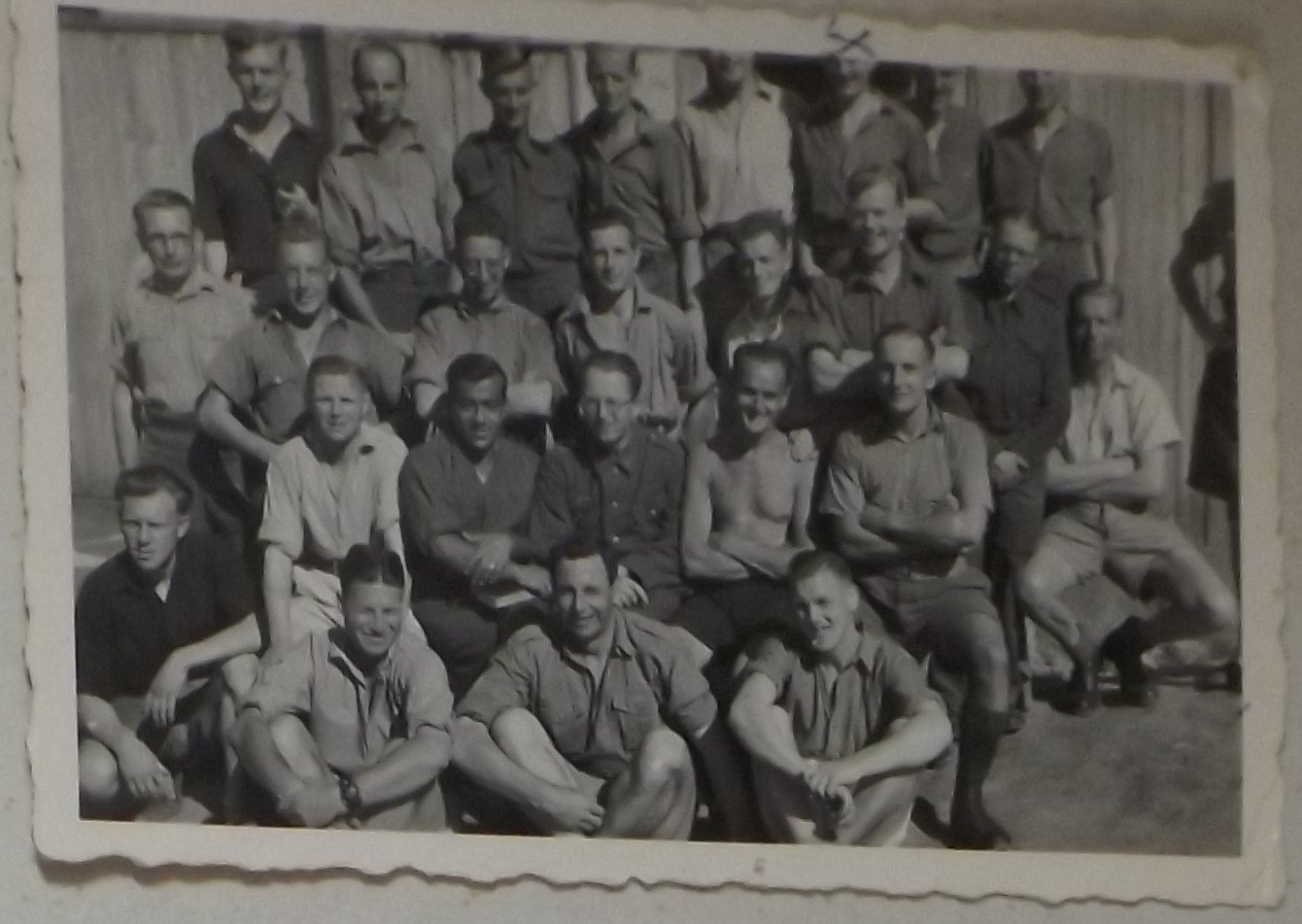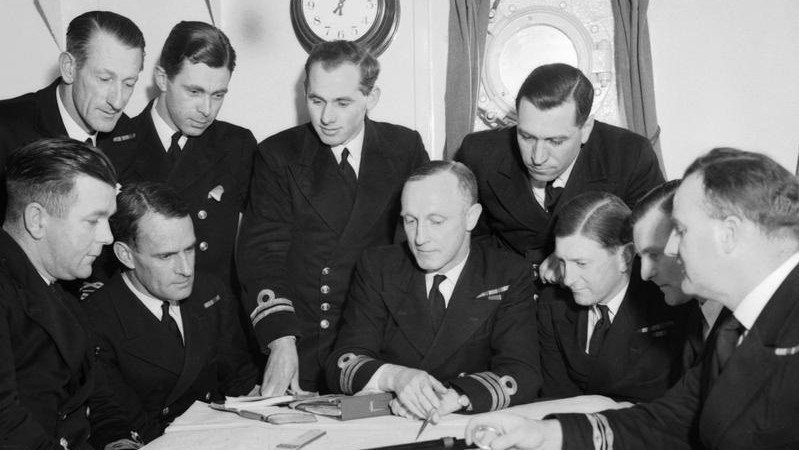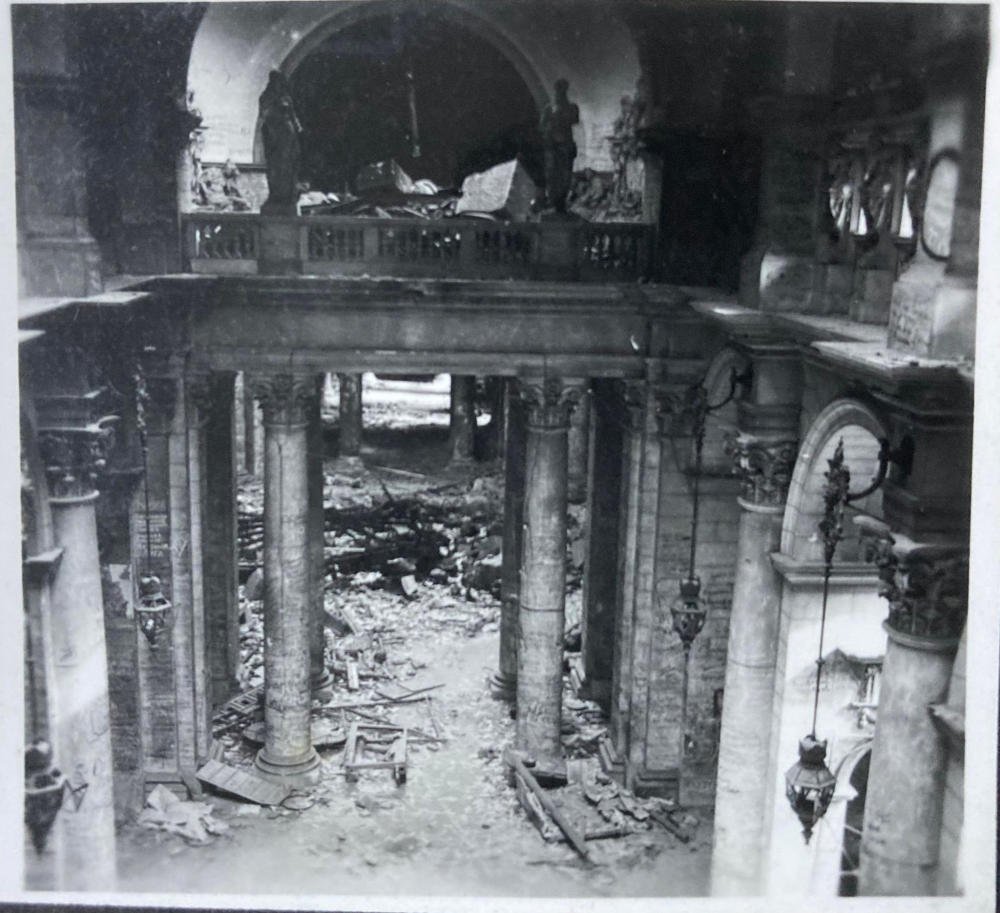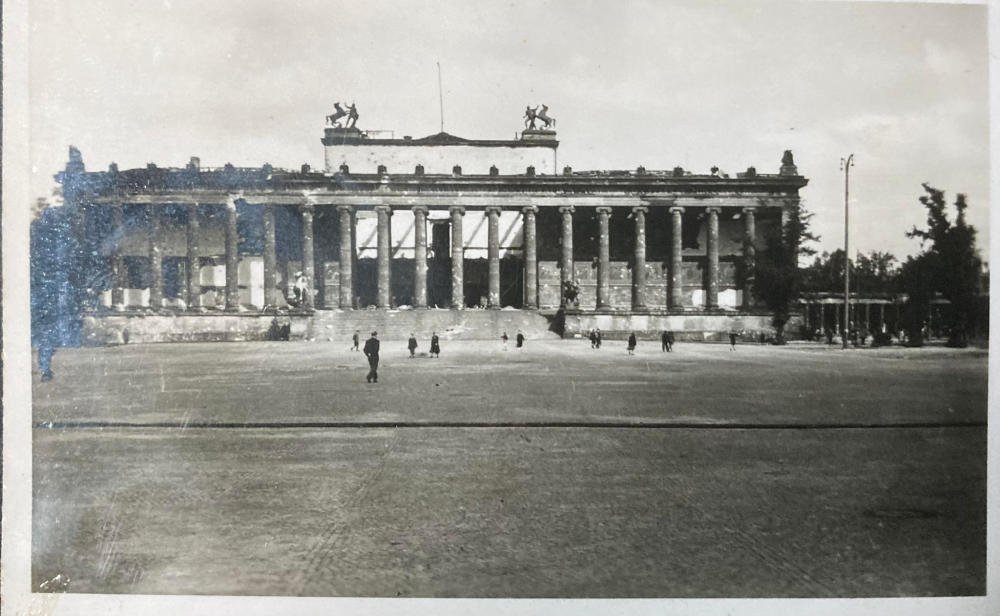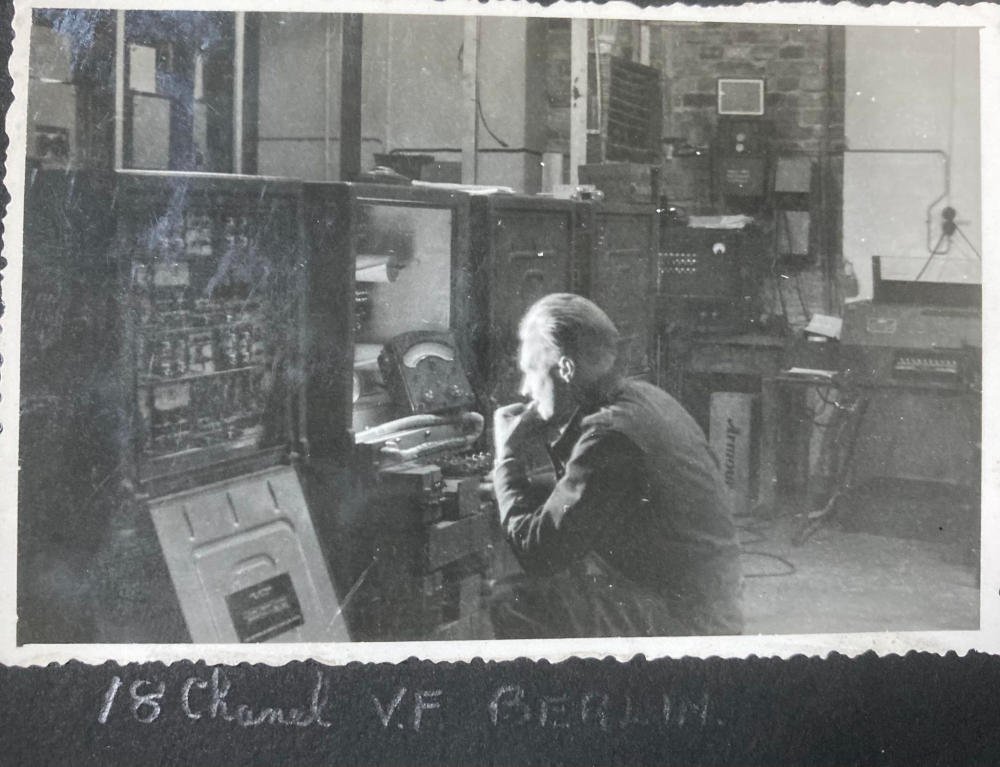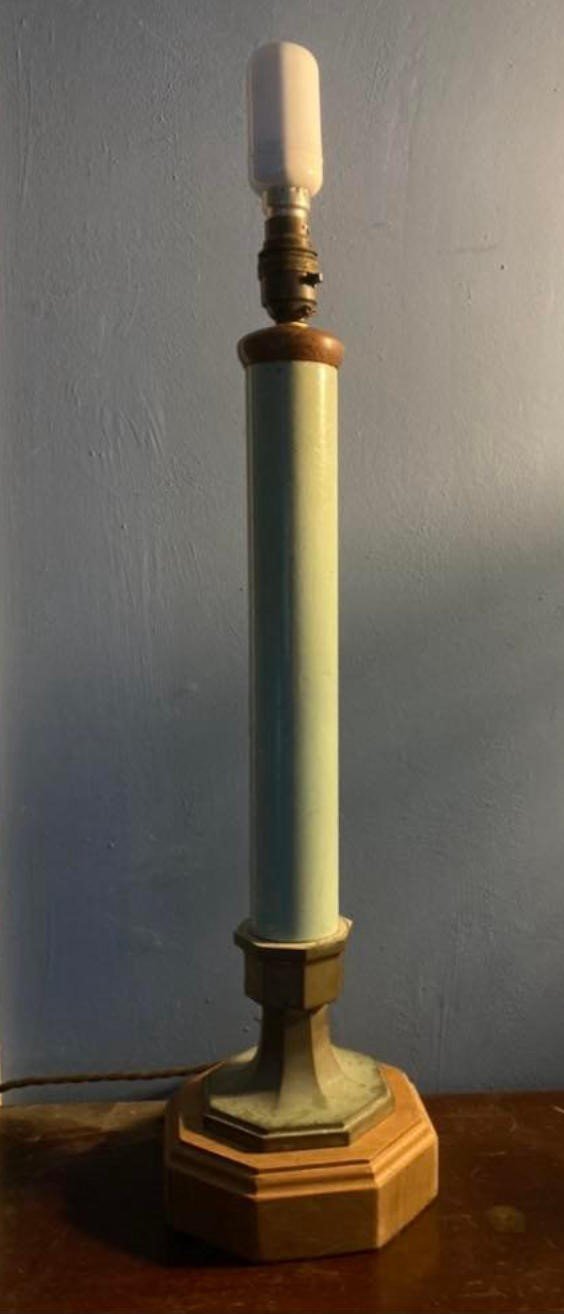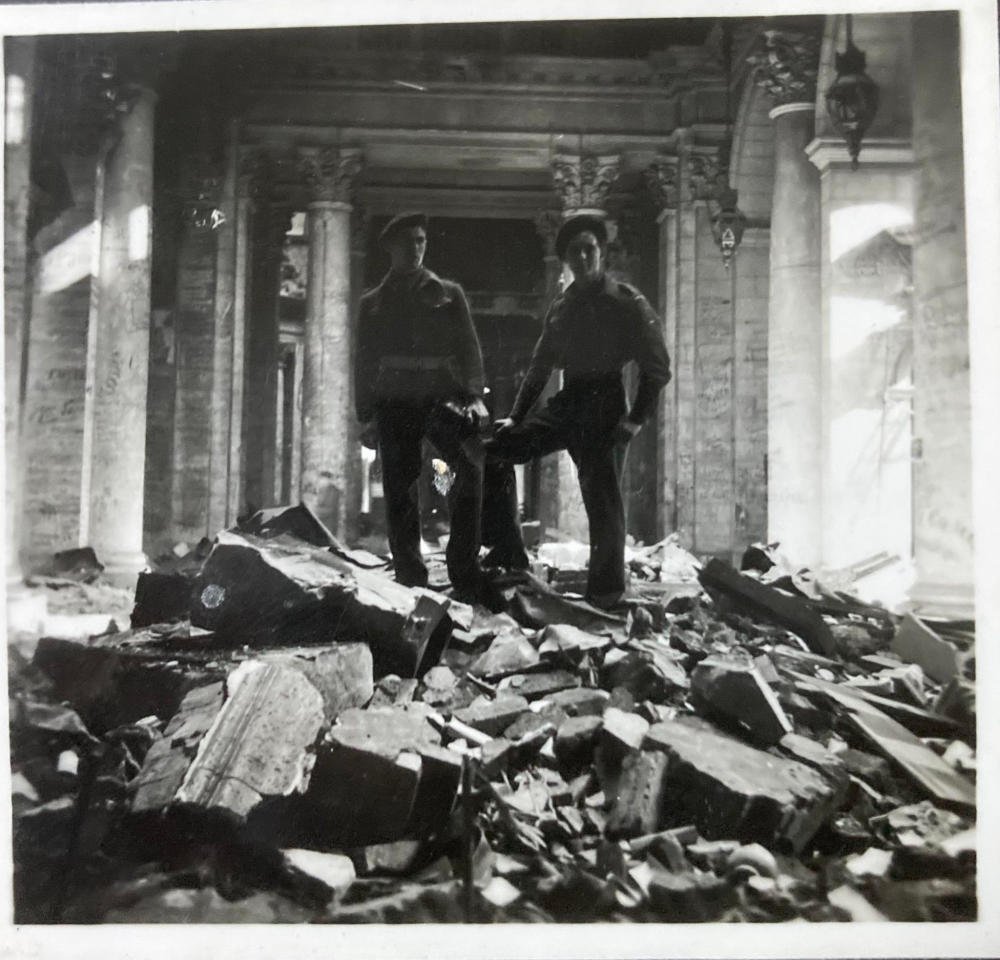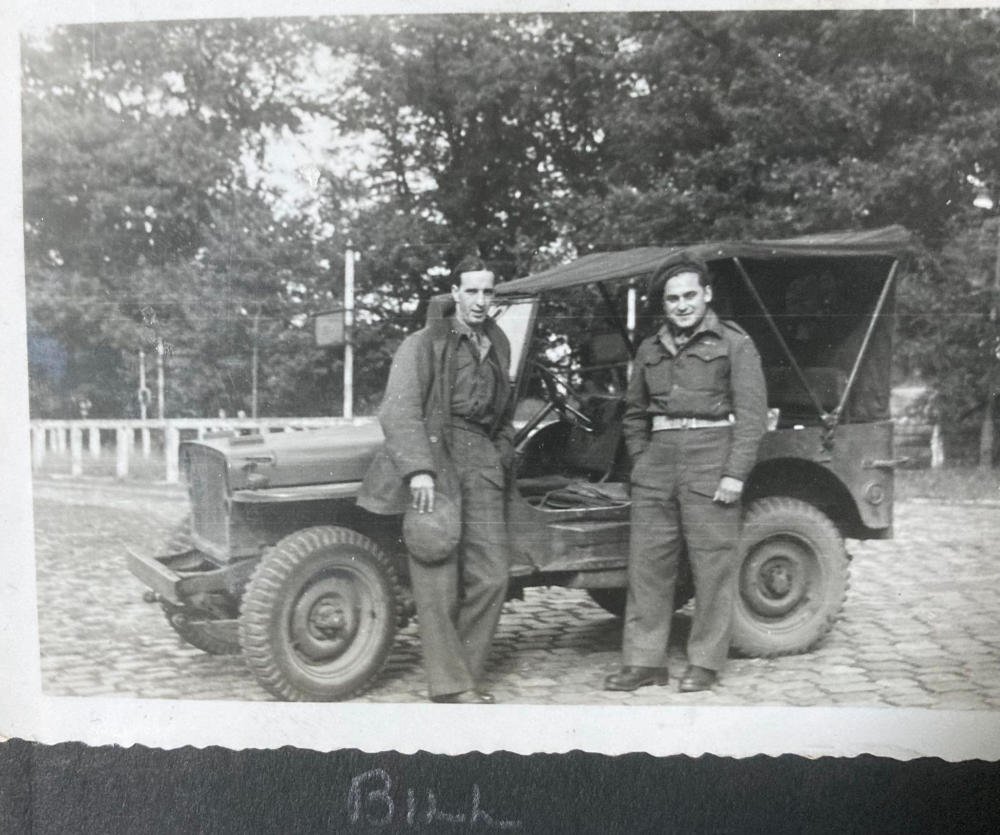
The Second World War resulted in the deaths of around 85 million people. Additionally, tens of millions more people were displaced. However, amid all the carnage people demonstrated remarkable courage, fortitude, compassion, mercy and sacrifice. We would like to honour and celebrate all of those people. In the War Years Blog, we examine the extraordinary experiences of individual service personnel. We also review military history books, events, and museums. And we look at the history of unique World War Two artefacts, medals, and anything else of interest.
The enduring importance of studying military history
This article explores the importance of military history and how it can shed light on the reasons behind conflicts, the motivations of those who took part, and the impact of technological innovations on warfare. It also discusses how the study of military history can broaden our understanding of the world and develop critical thinking and analytical skills.
The Second World War had a significant impact on the world we live in today. The study of military history has played a crucial role in understanding the causes and consequences of global conflict. This article explores the importance of military history and how it can shed light on the reasons behind conflicts, the motivations of those who took part, and the impact of technological innovations on warfare. It also discusses how the study of military history can broaden our understanding of the world and develop critical thinking and analytical skills.
The Second World War was a defining moment in human history, marking the end of the world as people knew it and paving the way for a new era of international relations, politics, and global economic power. It was a time of intense political, social and military upheaval, where nations and ideologies collided in a struggle for dominance and survival. Today, many years since the end of the war, the study of military history remains an important discipline, one that provides valuable insights into the causes and consequences of global conflict.
Lessons learned from a world at war
There are several reasons why the study of military history is important. First, military history helps to shed light on the reasons behind conflicts and the motivations of those who took part in them. This understanding can help to prevent similar conflicts from occurring in the future. For example, the lessons learned from the Second World War have helped to shape the modern world, including the establishment of the United Nations, the creation of international human rights laws and the promotion of democracy and free trade. However, on the first anniversary of the war in Ukraine, it is also tragically clear that the lessons of history do not prevent old enmities and new conflicts from happening.
Of course, military history can only teach us what we are willing to learn and does have practical applications that are relevant to the modern world. For instance, military history is used by policymakers, military planners and international organisations to inform their decisions and shape their strategies. Understanding the lessons of past conflicts can help to inform present and future military operations, improving the effectiveness of military interventions and reducing the risk of unintended consequences.
Technology and innovation
The study of military history can also provide insights into technological developments and innovations that have had an impact on warfare. For example, the Second World War saw the development of new weapons, tactics and technologies that changed the face of warfare forever. By studying the development and application of these technologies, military historians can help to inform future innovations and ensure that new technologies are used in the most effective and responsible manner possible.
The Second World War saw the development of many technologies that went on to transform post-war life.
The development of cryptography during the Second World War led to the creation of the first computers, which were used to decode enemy messages. The first electronic computers, such as the American ENIAC and British Colossus, were developed during the war and laid the foundation for the digital revolution that would transform post-war life. The use of computers in business, research, and everyday life has become ubiquitous, and the ability to process and store vast amounts of data has revolutionised every field of human endeavour.
Similarly, the development of jet engines during the war helped transform aviation. In 1949, the de Havilland DH.106 Comet became the world’s first commercial passenger jet. Prior to the Covid-19 pandemic, the commercial airline industry reached 38.9 million flights globally in 2019.1 The jet engine made air travel faster, more comfortable, and more accessible to the public. But emissions from aviation have also made a significant contribution to air pollution and possibly climate change.
The jet engine also had a profound impact on post-war military aviation, enabling supersonic flight and the development of fighter jets with unprecedented speed, stealth, agility and firepower. The impact of the jet engine on travel, commerce, and military power is still felt today. For example, it is believed that the use of western warplanes like the F-16 and Gripen fighter by the Ukrainian Air Force could prove decisive in the war against Russia. Of course, only time will tell.
Critical thinking and analytical skills
In addition to its practical applications, military history is also important in a more general sense, as it helps to broaden our understanding of the world. The study of military history provides a context for understanding the complex relationships between nations, and the motivations behind political, economic and military actions. This understanding can help to inform our understanding of the world today and the events that shape it.
Furthermore, military history is an important tool for teaching critical thinking, analytical skills and historical awareness. By studying military history, students can learn how to evaluate evidence, think critically about historical events, and understand the context in which they occurred. This knowledge can help to develop the skills necessary for a successful future, whether in the military, government, private sector, or academia.
In his 1961 paper, The Use and Abuse of Military History Michael Howard discusses the role of military history in the study of war and its use and abuse by politicians, military leaders, and the public.
Howard argues that military history is an essential tool for understanding the nature of war, but it is often misused for propaganda purposes. Military history should be studied objectively, without political bias, and used to inform policy decisions. However, politicians and military leaders often use selective historical examples to justify their actions, leading to a distorted understanding of history and potentially dangerous policies.
One of the key conclusions of the paper is that military history should be used to illuminate the realities of war, rather than to glorify it or justify particular policies. Howard emphasizes the importance of studying the social, economic, and political context of war, as well as military tactics and strategy. He argues that a more nuanced understanding of history can help prevent the mistakes of the past from being repeated in the present.
Overall, Howard's paper is a call for a more critical approach to the use of military history, both in academia and in the public sphere. It highlights the potential benefits and pitfalls of using history to inform policy decisions and stresses the importance of a clear-eyed understanding of the complexities of war.2
Certainly, I would agree with Howard’s premise that military history should be studied in breadth, depth and within the context of the times to try and gain an unbiased perspective of events. To the school pupil and casual observer, history might appear dusty, static and linear, but that is seldom the case. The study of history is a dynamic, interpretive, and iterative process that welcomes new viewpoints and encourages debate.
The utility of history as a military training aid
Operation Goodwood was a British offensive launched on July 18, 1944, during the Normandy Campaign. The operation involved a massive armoured and infantry assault against German forces in the Caen sector, with the aim of drawing German forces away from the American offensive, Operation Cobra, further west. The operation was supported by a massive aerial bombardment.
Despite the numerical superiority of the Allied forces, the operation met with mixed success. The British armoured units suffered heavy losses from German anti-tank guns, self-propelled (SP) guns and tanks, while the infantry made only limited gains. Nevertheless, the operation resulted in the destruction of many German tanks and artillery pieces but at a high cost in terms of Allied casualties. Immediately after the conclusion of Goodwood on 20 July 1944, controversy began about the operational intentions of the plan.
Today, Operation Goodwood continues to generate historical debate and controversy regarding its intentions and results. Subsequently, it has become a popular subject for writers, journalists, historians, and military theorists. In 1980, General Sir William Scotter proposed that German defensive tactics used at Goodwood might provide a template for NATO forces to repel a Soviet armoured offensive in northwest Europe. General Scotter’s proposition suggested that the German defensive strategy during Operation Goodwood, which involved using a combination of anti-tank guns, minefields, and concealed infantry positions to halt enemy armour, could be effective against Soviet tank formations. The idea was that NATO forces, like the Germans, could use a combination of conventional and unconventional tactics to slow down and disrupt Soviet tank offensives. This strategy was seen as especially useful for defending key chokepoints and urban areas.3
In 1982, Charles Dick sought to refute the so-called ‘Goodwood concept.’ Dick argued against this proposition, pointing out that the Soviet army had evolved since the Second World War and had developed new tactics and weapons systems. He argued that a strategy based solely on the German model would be insufficient to defeat a modern Soviet army. Moreover, it can be argued that the German defensive strategy was ultimately unsuccessful during Operation Goodwood. After all, the Allies were still able to achieve limited success and write down tanks, troops, and equipment that the Germans could not afford to lose or easily replace. Nevertheless, a generation of British Army officers visited the Goodwood battlefield, escorted by key protagonists such as Major-General Roberts, commander of the 11th Armoured Division, and Colonel Han Von Luck, 21st Panzer Division, and quite possibly learned the wrong lessons from a study of the operation.4
According to the U.S. Army’s Centre of Military History, staff rides (a combination of battlefield tours and exercises) represent a unique and persuasive method of conveying the lessons of the past to the present-day Army leadership for current application. Properly conducted, these exercises bring to life, on the very terrain where historic encounters took place, examples, applicable today as in the past, of leadership, tactics and strategy, communications, use of terrain, and, above all, the psychology of men in battle. It is true that staff rides are widely used by military organisations across the globe as a teaching aid, but not universally.5
The Israeli Defense Forces (IDF) reject the type of learning-from-history model typified by the staff ride. The IDF prefers to rely on practice and its own experience to prepare for future operations rather than the study of history. In The Staff Ride: A Sceptical Assessment, Anthony King argues that staff rides are of limited practical utility for preparing military leaders to face the unique challenges and stresses of combat. Instead, he contends that staff rides are primarily a social networking exercise, which helps unify the officer corps and create personal bonds between them. Secondly, he believes that staff rides also help fortify commanders when faced with making difficult decisions, knowing that their predecessors experienced similar challenges.6
As every conflict is a unique, never to be repeated event, the staff ride might be of limited practical use to the fledgling military commander. Nevertheless, the study of military history highlights the many similarities as well as the differences between conflicts, which in turn can provide useful templates to help inform and fortify the decision-making of tomorrow’s commanders. The British Army believes that military history can provide examples of courage, leadership and resilience that can be applied in a variety of contexts. However, it is also clear that we should be critical of how we choose to interpret historical events and the lessons we believe they teach us.
A deeper understanding of identity
The study of military history can help individuals develop a deeper understanding of their nation's identity and place in the world. In the United Kingdom, for example, military history is seen as an important part of national identity and heritage. According to The Royal British Legion studying military history can help individuals understand the significance of the role the Armed Forces have played in shaping the nation.
Military history also helps to preserve the memory of those who served and died in wars. The Second World War was one of the deadliest conflicts in human history, with millions of lives lost. By studying its history, we can honour the sacrifices of those who fought and died and ensure that their memory is not forgotten.
Studying genealogy, which is the study of family ancestry and lineage, can help someone gain a greater sense of identity by providing them with a deeper understanding of their family history and cultural heritage. Learning about one's ancestors, traditions, values, and experiences, can help individuals connect with their roots and develop a sense of belonging to a larger family community. By exploring their family history, individuals may discover inspiring stories of military service, resilience, determination, and triumph over adversity, which can serve as a source of inspiration and motivation. Overall, studying genealogy can help individuals better understand and appreciate their identity and place in the world.
In conclusion, the study of military history remains an important discipline that has both practical and academic applications. By studying military history, we can learn the lessons of past conflicts, inform future military operations and shape our understanding of the world. Whether we are students, policymakers, military planners or simply interested citizens, the study of military history provides us with a valuable tool for understanding the world and ensuring a safer, more peaceful future.
The study of military history can also teach us to be more critical and analytical and question our assumptions and biases because it provides us with a unique perspective on the past and the present. By examining historical events and military strategies, we can gain a deeper understanding of how decisions were made, what factors influenced them, and what the consequences were. This can help us develop critical thinking skills, as we learn to evaluate evidence, weigh different perspectives, and analyse complex situations.
Furthermore, studying military history can expose us to a range of different cultural and political perspectives, allowing us to see how biases and assumptions can impact decision-making. By understanding the context and motivations behind historical events, we can develop a more nuanced and sophisticated understanding of the world and our place in it. This can help us become more empathetic and open-minded, as we learn to appreciate different viewpoints and challenge our own assumptions and biases.
Overall, the study of military history can help us become more critical and analytical thinkers, better equipped to navigate the complexities of the modern world and make informed decisions based on a deeper understanding of the past.
Sources:
1. Number of flights performed by the global airline industry from 2004 to 2022 (2023), Statista.com, <https://www.statista.com/statistics/564769/airline-industry-number-of-flights/> [accessed 20 February 2023].
2. Michael Howard, ‘The Use and Abuse of Military History,’ Parameters 11, no. 1 (1981), doi:10.55540/0031-1723.1251.
3. General Sir William Scotter, ‘A Role for Non-Mechanised Infantry’, The RUSI Journal, 125.4 (1980), 59–62.
4. Charles J Dick, ‘The Goodwood Concept - Situating the Appreciation’, The RUSI Journal, 127.1 (1982), 22–28.
5. CMH Staff Rides, U.S. Army Center of Military History, <https://history.army.mil/staffRides/index.html> [accessed 28 February 2023].
6. Anthony King, ‘The Staff Ride: A Sceptical Assessment’, ARES& ATHENA Applied History 14, Centre for Historical Analysis and Conflict Research (CHACR), (2019), 18-21.
4 Reasons to Research Your Ancestor's Military Service History
In this blog post, we'll explore why researching an ancestor's military service history can be of great benefit to individuals and families.
Genealogy, or the study of family history and ancestry, has become increasingly popular in recent years. It allows individuals to discover their roots, learn about their ancestors' lives, and connect with their heritage. One aspect of genealogy that can be particularly fascinating is researching an ancestor's military service history.
In this blog post, we'll explore why researching an ancestor's military service history can be of great benefit to individuals and families.
1. Gaining a deeper understanding of your family history
One of the main benefits of researching an ancestor's military service history is that it allows individuals to gain a deeper understanding of their family history. Military service records can provide details on an ancestor's rank, service dates, and where they served. This information can help individuals develop a clearer picture of their ancestor's life and experiences. For example, The National Archives provides access to military service records for British Army soldiers who served between 1914 and 1920. By examining these records, individuals can discover where their ancestors served, what battles they may have fought in, and even details about their injuries or medals awarded.
2. Connecting with national heritage
Researching an ancestor's military service history can also help individuals connect with their national heritage. In the UK, military service has played a significant role in shaping the country's history and identity. By researching an ancestor's military service, individuals can gain a better understanding of the contributions made by their family members to the country's military efforts. This can help individuals develop a stronger sense of connection to their country and its history. For example, the Imperial War Museum (IWM) in London has a collection of over 1 million items that tell the story of modern war and conflict, from personal accounts of soldiers who served in the British Army to numerous films, photographs, and publications. These documents can provide a first-hand look at what life was like for soldiers on the front lines, and help individuals connect with their ancestor's experiences.
3. Discovering previously unknown information
Researching an ancestor's military service history can also uncover previously unknown information about their life and experiences. Military service records may provide details about an ancestor's family, occupation, and other aspects of their life that were not previously known. For example, The National Archives notes that military service records can include details about an individual's next of kin, address, and occupation before and after their military service. By discovering this information, individuals can develop a more complete picture of their ancestor's life.
4. Honouring an ancestor's military service
Researching an ancestor's military service history can also be a way to honour their service and sacrifice. By uncovering the details of an ancestor's military service, individuals can gain a deeper appreciation for the challenges they faced and the contributions they made. This can be especially meaningful for individuals whose ancestors were killed in action or suffered injuries during their service. For example, the Commonwealth War Graves Commission (CWGC) maintains records of individuals who died in military service during both World Wars. By researching these records, individuals can pay tribute to their ancestors who made the ultimate sacrifice for their country.
In conclusion, researching an ancestor's military service history can be a valuable and rewarding aspect of genealogy. By gaining a deeper understanding of family history, connecting with national heritage, discovering previously unknown information, and honouring an ancestor's service, individuals can develop a stronger sense of connection to their past and their family's contributions to history. The UK is home to a wealth of resources for researching military service history, including the National Archives, the Imperial War Museum, and the Commonwealth War Graves Commission. By utilizing these resources, individuals can unlock the fascinating and often poignant stories of their ancestors' military service.
If you want to know more about your ancestors' military service, please contact me today.
John Thorne, British Prisoner of War: Escape, Camp Life and Liberation
Cpl. John Thorne joined the Territorial Army in 1939. By 27 May 1940, John was a prisoner of war (PoW) and headed for a series of camps in Poland and Germany. John would escape, only to be recaptured. Eventually, John was sent to Stalag 383 where he would remain until April 1945. This is his story.
John Thorne joined the Territorial Army in 1939. By 27 May 1940, John was a prisoner of war and headed for a series of camps in Poland and Germany. John would escape, only to be recaptured. Eventually, John was sent to Stalag 383 where he would remain until April 1945. A member of the Scout Movement in civilian life, John was a founding member of the camp’s Richard Coeur-de-Lion, Rover Scout Crew. When the camp was evacuated by the Germans in April 1945, John and some of his comrades escaped once again. However, John’s bid for freedom and journey home did not pass without incident. This is his story.
John in uniform, probably taken in 1939 or 1940 before his deployment with the 5th Buffs to France.
April 1939
John joined the Territorial Army (TA), the 4th/5th Battalion, Royal East Kent Regiment (the Buffs). The 5th Battalion was reformed in 1939 as a 2nd Line duplicate of the 4th Battalion when the Territorial Army was doubled in size. Initially, the 5th Buffs was assigned to the 37th Infantry Brigade, part of the 12th (Eastern) Infantry Division, which was a 2nd Line duplicate of the 44th (Home Counties) Division. However, on 26 October 1939, it was transferred to the Division's 36th Infantry Brigade in exchange for the 2/6th East Surreys.
The 5th Buffs, along with the 6th and 7th Royal West Kents, remained in the 36th Brigade for the rest of the war. The battalion served with the BEF (British Expeditionary Force) in France in 1940 and fought in the Battle of France and was evacuated at Dunkirk. The 12th Division suffered heavy casualties. Unfortunately, many of the men had only very basic training before embarkation. The Division also received minimal artillery support.1
July 1939
John was promoted to full Corporal at Wannock Camp near Eastbourne.
August 1939
John’s unit was mobilised, and he was officially ‘called up’ for active service.
September 1939
The Second World War starts. John is assigned to guard Dover Priory Station and railway tunnels.
October 1939
John is promoted to acting Lance-Sergeant, Dover Priory Station, second in command (2IC) of the guard.
November 1939
John is sent on a course to the brigade tactical school (junior commanders). He reverts to the rank of Corporal. He passed the course and was recommended for a commission and then re-joined his battalion at Canterbury.
January 1940
John is sent on gas and passive air defence (camouflage and concealment) courses. Again, he is recommended for a commission.
14 April 1940
The brigade is sent to France as part of British Expeditionary Force (BEF).
May 1940
John’s unit was based at Fleury-sur-Andelle near Rouen, Normandy. He gave lectures to troops on gas and passive air defence. He was informed by his battalion commander that he would be sent home to start officer training. He was supposed to report to Aldershot on 6 June 1940.
10 May 1940
Germany invades Holland. John’s battalion is moved to Doullens, a major road intersection between Abbeville and Arras and Amiens and Saint-Pol-sur-Ternoise, making it strategically important. The battalion was based at a Catholic Seminary (boy’s school) and tasked with placing roadblocks across bridges.
20 May 1940
The 5th Buffs covered a frontage of approximately 6.5 miles with three companies forward, from Pommera on the right to La Herliere. The 6th Royal West Kent, on their right, covered the approaches to Doullens. Probably the first sign of impending trouble was a wave of retreating French soldiers who passed through the line held by the Buffs. Next, the 6th Royal West Kent positioned were shelled and machine-gunned. By 12.30hrs German tank and infantry attacks were coming in along the British extended defensive line.
At about 13.00hrs the 5th Buffs were ordered to withdraw. However, it appears that this order never reached the forward companies. According to John’s written testimony, his battalion was attacked and quickly overrun by what he believed to be units of the 6th Panzer Division. According to Gregory Blaxland, the 6th Panzer Division hit the 6th Royal West Kent at Doullens while the 8th Panzer Division struck the 5th Buffs and 70th Brigade. The speed and tempo of the German advance simply could not be matched by the French and British response.
The 5th Buffs 6.5-mile defensive line, Doullens, on N25 main road, Northern France, map not to scale.
Those men who avoided immediate capture by the Germans hid in a cabbage field near a train station, and then started marching south towards Amiens. The remnants of the 5th Buffs and 6th Royal West Kent fell back on the Somme in small groups.2
During the brief fighting at La Herliere, Arras Railhead, John mentioned the brave and defiant actions of Private John Arthur Lungley (Service Number: 6584460), B Company, 5th Battalion, The Buffs. Lungley refused to surrender and kept firing his Bren light machine gun until the Germans brought up a tank to deal with him. Lungley is buried in La Herliere Communal Cemetery, France.3
Initially, Lungley was buried in the hole from which he fought. The French villagers, in defiance of the Germans, would lay fresh flowers on his grave every night. When the villagers decided to rebury Lungley in the local cemetery, the event caused such unrest, the Germans stopped the ceremony. Instead, he was quietly reburied at night but the villagers never forgot his stubborn defiance or his sacrifice.4
John’s personal notes, Monday 20 May 1940
We moved out of the seminary in Doullens just after dawn and were taken by company trucks to Le Brey Saute. The company commander, Captain Hart and his second in command (2IC) Captain Rawlins gathered the NCOs (Non-Commissioned Officers) and took us forward to inspect the ground ahead for good concealment and arcs of fire. Dispositions having been decided, the company moved forward by platoons and sections and settled into their positions by 09.30hrs.
Officially we had been told that a few AFVs (armoured fighting vehicles) had broken through on our front. In fact, it was the spearhead of 6th Panzer Division. The enemy column advanced up the road toward B Company at around lunchtime, when many of the men were in the rear area visiting the ration truck.
The platoon .55 calibre Boyes anti-tank rifle was manned by No. 1 Section, who opened fire. This gunfire stopped the enemy lead vehicles. After just three rounds had been fired the order was given by B Company commander for all those manning Brens (Bren light machine gun) and ATRs (anti-tank rifles) to retire to the nearby train station, where trucks were waiting to evacuate us.
On arrival at the train station, the Germans brought a heavy machine gun into play, sweeping the station forecourt, where our trucks were situated. Captains Hart and Rawlins were trying to organise a defense of the station. Under heavy fire, I received permission to get boxes of ammunition off the trucks. Shortly after returning to the company, Captain Hart gave the order, ‘Every man for himself.’ At this point it became obvious many of us would become prisoners of war (PoWs). I decided to try and get away and contact one of the other companies. I managed to get through a barbed-wire fence and across a railway embankment without being spotted by the Germans.
Crawling into a cabbage field, John came across Captains Hart and Rawlins and several NCOs from the company who had also evaded capture. They watched while the Germans used the company’s own trucks as prisoner transport. The group of escapees moved west until they came across a road filled with a constant flow of German vehicles. Hidden at the roadside, the group waited about an hour for a break in the traffic and eventually decided to change direction and move south and try to reach the Maginot Line.
Tuesday 21 May 1940
John’s group of fourteen men moved south across-country. They were provisioned by the generosity of local French inhabitants. Captain Hart was able to draw up a route of march for the group by copying a map provided by a French villager. The group observed endless columns of German vehicles on all the major roads. Captain Hart’s route would take them south and then southwest to Les Andelys.
Wednesday 22 May 1940
On leaving the village where they had received help, the group moved cross-country once again, avoiding main roads. They crossed a field crisscrossed with tank tracks and discovered the bodies of several dead French soldiers laying in a ditch.
Saturday 25 May 1940
The men became separated into two groups while crossing a road during a brief gap in the German traffic. The two groups were never reunited.
Sunday 26 May 1940
John’s group moved toward the river Somme. German artillery had the far bank of the river under fire with shells passing over the heads of the men.
Monday 27 May 1940
John’s group decided to try and cross the river to reach the Allied side. However, the group were surprised by a German sentry and taken prisoner. The group was transported to the German company headquarters, where they gave their names, ranks and serial numbers. Captain Hart was separated from the other ranks. The group was moved by truck to Albert. Next, they were taken to a French aircraft factory and put under guard outside one of the hangers. John recalled how the group of British prisoners became an object of curiosity to passing German troops.
In general, the Germans were either friendly or indifferent to the British servicemen. One German soldier (sometimes referred to as a Landser) stopped to chat with the group in English, and even shared his rations with them. At around 14.00hrs the group was transported toward Bapaume. At about 17.30hrs the group was moved by lorry to Cambrai, where they spent the night at a barracks, sleeping outside on the parade square.
Map of the Principle British and Dominion prisoner of war camps in Europe, 1944,
British Red Cross, Museum & Archives.
Tuesday 28 May 1940
John’s group were taken to Charleville on the river Meuse. Later, they were driven to Bitburg, north of Trier, where they were forced to camp in the open for five days.
Monday 3 June 1940
The prisoners were taken to a railway siding and loaded onto cattle trucks. John was appointed the NCO in charge of his truck, which was overcrowded with around 70 men. John believed the cattle trucks should have accommodated no more than 40 men. From Bitburg the train took them northeast to Koblenz, north to Bonn, Cologne, Dusseldorf, Duisburg, Essen, east to Kassel, northeast to Magdeburg, Berlin, east to Poznan, and finally northeast to Thorn (Torun), Poland. John simply described the journey as long and uncomfortable.
The prisoners were held at Stalag XX-A (Fort 12, Camp 13) until sent to work in Danzig on 25 June 1940.5
Notification that John was interned as a prisoner of war, June 1940.
25 June – 25 August 1940 – Danzig (Gdańsk)
John was rather vague in his description of the camp at Danzig. Using information on the Forces War Records website, John was probably moved to Stalag XX-B Marienburg, Danzig (now Malbork Poland). Originally built during the First World War, the camp was in a poor condition by the time British, Poles and Serbs were held there in 1940. He does say the camp was built on a hillside overlooking the harbour.6
During the second week at the camp, John became friends with Ted Lancaster, Bert Johnson (Sherwood Foresters) captured in Norway, Lance-Corporal Bill Bailey (King's Own Yorkshire Light Infantry) also taken in Norway and Sergeant Bill (Darkie) Jones (Royal Signals) captured in France. Together, John and his new group of friends planned to escape from the camp.
The escape was scheduled for 25 August 1940. The men were provisioned by the camp’s escape committee. Having cut a hole in the perimeter fence, the group slipped out of the camp. The poor upkeep of the camp might have made the group’s escape easier. They climbed up a slope covered with undergrowth and emerged in what appeared to be a public park with many people enjoying a Sunday stroll. The men remained hidden in the undergrowth until dark. Ted had managed to keep a compass hidden on his person. They spent the next few days moving at night and laying up during the day.
29 August 1940
The escapees passed out of the Free State of Danzig. Next day they turned east towards the Russian frontier.
5 September 1940
The group reached the banks of the River Vistula just before midnight but it was too wide to swim across. They found a small rowing boat with just a single oar, and managed to cross the fast-flowing river, which John estimated was about a mile distance.
7 September 1940
Moving along the back of a row of houses, a German policemen apprehended the group at gunpoint. The group had allowed themselves to be seen by several civilians during the previous days. Additionally, just before their capture, two of the group had stopped to ask a resident of the village for cigarettes. The men might not have realised it at the time but around 95 percent of the population of the Free State of Danzig were German, not Polish, and so likely to inform the authorities about them.
On re-capture, the group was transported by truck to a German military prison before being sent back to Danzig by rail. The journey took around three and a half hours by train. It had taken the men 14-days to cover the same distance on foot. To add insult to injury while at Stalag XXA, Camp 13, John and many other prisoners contracted lice.
September 1940 – April 1941 - Stalag XX-A (Thorn/Torun)
On their return to Stalag XXA, the escapees were first kept together in a cell, separated from the other prisoners, for about three weeks. As a punishment for their escape each man would be kept in isolation for 68-days. However, before the punishment was carried out, John was taken ill with suspected Diphtheria (a serious bacterial infection which can cause breathing problems, heart failure and death). He was sent to Fort 14, the camp hospital, and confined there for four weeks. On discharge from hospital, John was sent to Camp 13 where he was placed in a large barracks with hundreds of men, all sleeping in cramped three-tiered bunks.
Suddenly, without warning, John and about 100 other prisoners, all escapees, were transferred by rail and then road to Stalag XI-B Fallingbostel (work camp).
April – July 1941 - Stalag XI-B Fallingbostel (work camp)
Stalag XI-B was one of the Wehrmacht's largest prisoners of war (PoW) camps, holding up to 95,000 prisoners from various countries. In fact, the camp was a complex of small camps spread over many square miles. Stalag XI-C was part of this complex but is better known today as the infamous Bergen-Belsen. The new arrivals at the camp showered, had their heads shaved and uniforms disinfected. John wrote that the camp was clean and well kept. The British prisoners were quartered with a group of French junior officers. The two groups immediately started to plan an escape. However, John’s group were separated from the Frenchmen a few days later and assigned to work parties.
John’s work party was given the task of laying pipes for an agricultural irrigation system. Over a period of a few weeks several men took opportunities to escape. However, most of these escape attempts were spur of the moment decisions and poorly planned.
May – June 1941 – Stalag XI-B - Lüneburg Heath, north of the camp
As John’s work group received no food from their German captors, they decided to go on strike. The guards threatened to shoot the prisoners if they did not go back to work. After a tense standoff between the two groups, the prisoners finally returned to work. As a punishment for refusing to work, John’s group were confined to their quarters without food for five days. It later emerged that the reason the Germans had not fed John’s work party the day of the strike was because it was the Whitson holiday. The guards had planned to return the work party to the camp early and allow the men a half-day holiday. Instead, on release from their confinement, John’s group were immediately transferred out of the camp and sent back to Poland.
Stalag XXI-A, Schildberg, Posen
On arrival at the new camp, John found many of the prisoners were recovering from wounds and some were awaiting repatriation to their home countries. After a few weeks, John and his comrades were assigned to a work party but discovered that it was war work, which was a violation of the Geneva Convention. Naturally, the British refused to work. Once again, the group was threatened with loaded rifles by the German guards but this time they did not back down. Instead, the group was returned to the camp.
July 1942 – April 1945 – Stalag XXI-A – Oflag III-C later renamed Stalag 383, Hohenfels, Upper Bavaria.
The camp comprised 400 detached accommodation huts, each typically housing 14 men. More were built towards the end of the war as prisoners were moved in from other camps as the Russian front advanced from the east. According to John’s testimony, when the British group arrived at the camp there was around 3,000 prisoners including RAF aircrews. When the camp was evacuated in April 1945 the number of inmates had grown to around 18,000 Allied personnel including Americans, Canadians, ANZACs, South Africans, Palestinians, and men from many other commonwealth nations.
Midge Gillies described Stalag 383 as a drab, miserable shanty town designed specifically to hold Allied NCOs who refused to work. The prisoners retained a great deal of autonomy in the organisation and running of the camp. A German censor at the camp wrote that the British prisoners did not give a damn who owned the camp, they just ran it how they liked – and patronised everybody. One of the PoWs said that the guards assumed the status of attendants at a holiday camp. In truth, the prison was no holiday camp for the inmates.
Mental Stress
The mental stress of incarceration showed itself in different ways in British prisoners of war. The camp inmates of Stalag 383 occasionally went ‘Stalag happy’ and performed the most bizarre and elaborate charades to occupy and entertain one another. Strange behaviours demonstrated by groups and individual inmates included holding a full-scale fox hunt through the camp and the setting up of an imaginary railway service to England. Inmates dressed as the Emperor Napoleon, Admiral Lord Nelson, and a tribe of North American Indians. One prisoner regularly walked an imaginary dog, another herded imaginary sheep while a third rode his imaginary motorcycle around the camp.
The Commandant of Stalag 383 became so concerned with the mental health of the prisoners that he suggested to the Senior British Officer of the camp that some men could take walks under parole outside the camp to alleviate the symptoms of stress.7
Food Scarcity
In 1944, there were about 90,000 British prisoners of war held in Germany or camps in occupied territories. In contravention of the Geneva Convention, which required the Germans to feed prisoners a basic, balanced diet, the men never received proper rations from their captors. The British Red Cross, St. John War Organisation, YMCA, and International Red Cross worked tirelessly to ensure prisoners were able to receive food parcels from home. Instead of luxuries, food parcels became necessities, supplementing the prisoners’ poor, unbalanced diet. However, the Germans were meticulous in the delivery of Red Cross and similar parcels, making them a top priority for the transport system.
Over the course of the Second World War, the British Red Cross sent around twenty million food parcels from the UK to British Prisoners of War scattered around camps in Nazi-occupied Europe and in the Far East. Around 163,000 parcels were packed each week except at the start and toward the end of the war.8
As well as food, the British Red Cross and St. John War Organisation sent clothing, books, musical instruments, games, and many other sundry items to British captives. It’s clear that a certain amount of pilfering was done by the Germans, nevertheless, most items did eventually reach their intended destination. Naturally, lack of food, over-crowded accommodation, inclement weather conditions, and disease all took their toll on the prisoners’ health and mental well-being.9
Prisoner of war food parcel, 1939-1945, British Red Cross, Museum & Archives.
The Rover Scouts
On 15 September 1942 the first British NCOs arrived at Oflag III-C. The British were placed in the camp because they were unwilling to work for the Germans. On arrival at the camp prisoners tended to form into groups based on nationality, branch of service or some common interest. One of the first groups to form in the camp was of people connected with the Scout Movement in civilian life.
In October 1942, a group of British and commonwealth prisoners decided to form an official Rover Scout Crew, which they named Richard Coeur-de-Lion (Richard the Lion Heart). The Scout Leader was Australian warrant officer Ivan C. Stevens, better known as Steve. John was appointed Quartermaster. The crew was divided into three patrols: the Bulldogs, Nomads and Owls. An old harness room in one of the disused stable blocks became the scout Den and was later used as the camp school room and library. As suitably quiet accommodation for study was extremely limited in the camp, the Den was opened as a ‘quiet room’ for those seeking solitude. A member of the scout crew would always be in attendance when the Den was open.
The scout crew took on many of the mundane chores necessary to keep the camp functioning such as collecting firewood. The scouts organised numerous activities to keep its members and other prisoners busy from debating societies and amateur dramatics to sports and various self-improvement classes. First Aid classes were taught by the scouts until a St. John Ambulance Brigade was formed in the camp. The Brigade performed medical duties at all camp football matches and theatre performances. Members of the scout crew took an active role in the many theatrical productions held at the camp’s National Theatre. The scout crew organised social events such as the annual Christmas party. Holidays like Christmas and New Year could be particularly difficult psychologically for prisoners. Depression could settle on a man; its symptoms so well recognised the prisoners called it ‘barbed-wire disease’.10
John (marked with an X) during the Scouts last Christmas Party in Stalag 383. John in the Scout Den with some of the crew, Christmas 1944.
Click on images to enlarge
Camp Universities
Francis Newman was the first British serviceman to pass a professional examination in a prison camp during the Second World War. For many men, captivity represented an opportunity to gain an education and qualifications that would have otherwise been denied to them in ordinary life.11 Stalag 383, John said the camp contained so many talented people with nothing but time on their hands that a Warrant Officer (WO) from the Royal Army Educational Corps started a Stalag University. The University taught a wide range of subjects and attracted thousands of students.
The Educational Book Section of the British Red Cross PoW Department was responsible for collecting and dispatching books for study to men in the camps. By May 1942 the Educational Book Section had received 15,355 requests for books and study aids and had arranged for over 69,000 educational books and 3,542 study aids to be sent to the camps, regardless of a wartime shortage of paper. The British Red Cross approved 6,091 different exam papers from 136 different examining bodies from Cambridge University to the Beekeepers Association. The Red Cross also sent rulers, mathematical instruments, drawing boards and chalk. Medical students were sent skeletons and other anatomical specimens to help them pass practical biology exams. The Germans would provide tables and chairs for examination rooms. The Educational Section sent 17,000 exam papers to students who sat around 11,000 exams with an average pass rate of 78.5 percent.12
A collection of photos of a Stalag 383 ‘National Theatre’ production of Rope, winter 1944.
September 1942 – April 1945
As the inmates refused to work for the Germans, they had plenty of time to kill. Subsequently, numerous sports were played in the camp. The inmates even managed to transform a large concrete water tank known as the Fire Pool (which provided a central source of water in the event a fire broke out within the camp) into a serviceable swimming pool. John remarked how during hot days the swimming pool was often crowded with inmates until lights-out. Many aquatic sports competitions were held in the pool and each of the fourteen companies fielded a water polo team. John also helped the camp escape committee but gives no details of his activities in his testimony.
Using clandestine radios, the inmates were able to monitor news broadcasts and follow the Allies advance into Germany during the last months of the war. In early April 1945, the prisoners were informed the camp was to be evacuated.
John, standing, right, probably taken in Stalag 383 as all subjects are NCOs.
12 April 1945 – Stalag 383
John wrote that on 12 April 1945 the Red Cross white ladies (army lorries painted white and driven by British military personnel (PoWs) accompanied by German guards and a Red Cross representative) arrived at the camp. Red Cross parcels were handed out, one between four men. Next, the prisoners were moved out of the camp and onto a road. John said that whether the men were march-fit, sick, or disabled, it was all the same to the German doctors. Everyone who could be found was forcibly evacuated from the camp. Apparently, many inmates concealed themselves in various hiding places within the camp to avoid the exodus. There was no motor transport for the inmates and by nightfall men were dropping out along the line of march. At first, John explained, the guards would try to rouse the small groups and get them marching again. But later, no one from the camp administration came along when John and a small group of his comrades dropped out for a rest. They took this opportunity to slip away from the forced march.
13 April 1945
Early the next morning John and his friends cleaned themselves up and then moved off in regulation fashion. John recalled that they looked quite smart as they marched along. However, the group were stopped by a German Field Police (Feldgendarmerie) unit looking for deserters. The Feldgendarmerie turned the British over to a small group of German truck drivers who had lost their vehicles when they had been attacked by Allied fighter-bombers. Together, the little mixed group of Germans and British NCOs marched about ten miles to Hohenberg (unfortunately John is a little vague about the exact location but is probably the town between Stuttgart and Nuremberg). The British were handed over to the civil authorities in Hohenberg, where they were given rations and bedding, and remained there for a few days.
14 April 1945
John wrote that at about midday on 14 April, a French soldier called Rene joined their group. He said he had been picked up outside Regensberg, which is east of Hohenberg, after he had escaped from a PoW camp. John remarked that he seemed pleasant enough and spoke good English.
15 April 1945
John and his comrades were put to work around the town but were not closely supervised. During the afternoon of 15 April, a German military motorcycle came racing through the town pursued by an Allied rocket-firing Typhoon aircraft. To try and evade its pursuer, the motorcycle went over a humpbacked bridge at speed and then turned into a large barn that stood beside the road. At the same moment, the Typhoon pilot fired a salvo of rockets. The rider and passenger either jumped or were thrown clear as the motorcycle crashed into the barn. In the next moment, the rockets hit the barn and it exploded. Unfortunately, the barn housed cows and horses. John explained how the nearby towns people and PoWs rushed to the scene and were able to save about seven or eight of the 15 animals trapped in the inferno.
16 April 1945
The next day, after the episode with the Typhoon and motorcycle, the local Bürgermeister (mayor or chief magistrate) sent for the group of PoWs. The Bürgermeister was concerned that the town’s women would be raped when American troops arrived to occupy the town and asked the men to intercede on the town’s behalf. This fear that the town’s women would be raped was probably due to propaganda and stories of widespread rapes and killings of German civilians by Russian troops in the east of the country.
17 April 1945
John recalled that around breakfast time he heard a commotion downstairs and on investigation found Stan “NAAFI” Henson in a car with a group of chaps, all armed to the teeth, from Stalag 383. Henson informed John that the prison camp had been liberated by the Americans. The German doctor who had insisted that all the sick and disabled prisoners be evacuated from the camp had been shot dead. Henson’s group left John and his comrades with arms and ammunition and told them to roundup any German soldiers left in the town. Next, John says they went to see the Bürgermeister and told him that the town’s folk should hang white bed linen from upstairs windows and public buildings to signify surrender. The British NCOs then went around confiscating weapons from those German troops who remained in the area.
Just after lunchtime an American Jeep arrived in the town square. John and his comrades made themselves known to the American troops. The jeep was the point detail or reconnaissance vehicle for the approaching 4th Armoured Division. An American Private asked John if he would sell him the Luger pistol (P08) he was carrying. These were highly prized souvenirs amonst American troops. John said the Private was overjoyed when he simply handed the pistol over as a gift. As elements of the armoured division started to rumble through the town, John and his comrades sat beside the road while American troops tossed them cartons of cigarettes, C and K-rations as they passed.
At dusk, the group was transported by the Americans to a farmhouse some miles away. The German farmer and his family were relocated to the barn.
18 April 1945
About lunchtime John’s group moved to an American Army encampment. Next, the group moved to Nürnberg (Nuremberg) and were informed that they would be handed over to AMGOT (Allied Military Government of Occupied Territories). AMGOT wanted to move John and his comrades back toward Stalag 383. This arrangement did not suit John, who wanted to move forward, not back. So, John and Rene decided to make their own way home. First, they got a ride in an American Army truck heading northward. However, the truck dropped them in the middle of nowhere. They walked to the nearest village, which was occupied by the Americans. They were taken into custody and interrogated by an American intelligence officer. As John had letters from home and some official documents on his person that substantiated his story, he was eventually released from custody. John was sent to the guardroom where the Military Police made him welcome, but Rene was not released. The commander of the guard kept referring to John’s ‘kraut’ friend (meaning Rene).
Next morning, driving out of the village, John passed a large PoW stockade and one of the prisoners was Rene. John was told that Rene was not a Frenchman, but a German Obergefreiter from a Panzer Grenadier Regiment stationed near Regensburg. When his unit’s camp was about to be overrun by the Americans, Rene had fled and hidden in a nearby forest. Later, he had murdered a French PoW and stolen his identity. John never learned the German soldier’s real name or his fate.
19 April 1945
John was taken to a US airfield where he waited for a flight home. A group of American servicemen took him under their wing and entertained him. While at the airfield, John said he watched the film White Christmas, but he was mistaken as the movie was not released until 1954. He probably watched the film Holiday Inn (1942), which featured Bing Crosby singing the song White Christmas.
20 April 1945
After waiting around all morning on the runway, John and two British officers were told they would be put on a flight to Ghent, Belgium, but due to bad weather the flight was re-routed to Paris, France. The flight landed about 17.00hrs and they were taken to a US Rest Centre nearby.
22 April 1945
Finally, John got a ride on an RAF Transport Command, Handley Page Hampden aircraft to RAF Croydon. Next, John went to Chalfont Saint Giles and then to Worcester. Two days later, he was on a train home. When John left for France in 1940, he weighed 12 stone 8oz. On his return to England, he weighed just 8 stone 3oz, but he was home at last.
A telegram announcing John’s arrival home, which reads: ‘John Stafford arrived yesterday evening without a rag to his back or a penny in pocket. Mother naturally shocked at his appearance but getting over it. Charles.’
Primary sources
John Thorne’s family provided a range of official documents, maps, books, and photograph albums plus 50-pages of handwritten testimony about his wartime experiences and his life in various prisoner of war camps.
Secondary sources
1. Buffs (Royal East Kent Regiment), see: https://en.wikipedia.org/wiki/Buffs_(Royal_East_Kent_Regiment)
2. Destination Dunkirk: The Story of Gort’s Army, Gregory Blaxland, William Kimber & Co. Ltd., 1973, pp. 121-129
3. Commonwealth War Graves: https://www.cwgc.org/find-records/find-war-dead/casualty-details/2279541/john-arthur-lungley/
4. Destination Dunkirk, Blaxland, p. 131
5. Stalag XXA https://en.wikipedia.org/wiki/Stalag_XX-A and Torun Fortress https://en.wikipedia.org/wiki/Toru%C5%84_Fortress
6. Stalag XX-B Marienburg, Danzig https://www.forces-war-records.co.uk/european-camps-british-commonwealth-prisoners-of-war-1939-45
7. The Barbed-Wire University: The Real Lives of Allied Prisoners of War in the Second World War, Midge Gillies, Aurum Press Ltd, London, 2011, pp. 76-83
8. British Red Cross, Museum and Archive, Prisoner of War Food Parcel webpage, accessed 15 May 2022 https://museumandarchives.redcross.org.uk/objects/8944
9. Prisoner of War: The Story of British Prisoners held by the Enemy, Noel Barber, George G. Harrap & Co Ltd, London, 1944, pp. 13-17
10. Glowing Embers, R. Philip Smith, Jarrold and Sons Ltd, Norwich, 1946, pp. 7-19
11. Prisoner of War, Barber, pp. 40-49
12. The Barbed-Wire University, Gillies, pp. 271-288
Additional resources
The Red Cross Museum archive https://museumandarchives.redcross.org.uk/objects/29269
The Museum of St. John https://museumstjohn.org.uk/st-john-during-the-second-world-war/
Stalag 383 Bavaria: A History of the Camp, the Escapes and the Liberation, Stephen Wynn, Pen & Sword Military, 2021.
6 tech tips for tackling your master’s in military history
In this blog post, I have laid out six tech tips (software and devices) that helped me obtain my master’s degree in military history by research.
When I started my master’s degree in military history, one of the first things I did was browse the Internet for guidance on undertaking research, managing my time and dissertation writing techniques. Although I did find plenty of general information about undertaking a master’s degree, I did not discover anything specific to military history. During my course induction, the university did recommend some online resources and advice on conducting research. However, I quickly realised that I would have to develop my own methods of study and find the tools to match. In the remainder of this blog post, I have laid out six apps and devices that helped me succeed with my research and writing. I do hope you find it useful.
When undertaking a master’s degree in military history, you naturally spend a lot of time doing research at archives, museums, and libraries. As a part-time student, holding down a full-time job, I seldom had the opportunity to spend days pawing over war diaries, letters, or official documents. Instead, I had to maximise my available time and access to archive resources. Additionally, five months after I started my course, the Covid-19 pandemic struck, closing many public buildings for long periods. When I was able to secure a visitor’s slot at The National Archives, for example, I had to scan and save as many pages of as many documents as possible. Luckily for me, the Adobe Scan mobile app proved the perfect solution.
1. Adobe Scan
Once installed on your smartphone or tablet, Adobe Scan enables you to easily capture and convert documents to PDFs. The app is free to use, which is always a bonus when you are a student. When you create a free Adobe Document Cloud account, all your scanned documents are automatically backed up, and are available from anywhere with an Internet connection. The free service provides you with 2-GB of Cloud storage and text recognition for documents up to 25-pages. Adobe Scan is available for Android and Apple iPhone.
During my research project, I scanned hundreds of pages of war diaries. Frequently, the diary entries were written by hand in faint pencil. This made them hard to read and difficult to capture as an image using a smartphone camera. However, Adobe Scan has some very handy features, such as filters, which can transform illegibly faint scribble into clearly discernible text. Once you have found the right filter, simply click the ‘Apply to all pages’ button, and your document is transformed. Adobe also makes it easy to download documents to your device, share via email and save a copy to Google Drive.
Screen grabs from Adobe Scan mobile app
2. Samsung tablet computer
I mainly used my laptop computer for desk research and writing. For field research, I purchased an inexpensive Samsung Galaxy tablet (other brands are available), a 7-inch screen and 32-GB of storage. I found the smaller 7-inch form factor more convenient to use than the larger 10-inch screen, but I guess it is a matter of personal preference. Additionally, I got a hard-shell protective case, which doubled as a stand, and a Bluetooth wireless keyboard. The only apps I installed on the tablet were Adobe Reader, Adobe Scan, Kindle and Mendeley, which I will come to later. Using My Files on the Galaxy tablet, I created a very simple filing system. Next, I downloaded every research document onto the device as my project progressed. This put all my research documents at my fingertips and allowed me to work anywhere without being reliant on an Internet connection.
3. Amazon Kindle
During a degree course, you borrow and buy lots of books. Printed books take up a lot of shelf space. Whereas digital books (eBooks) only occupy storage space on your tablet, which can always be increased. I used Amazon Kindle as my preferred digital library. As well as the mobile app, you can access your Kindle library from any web browser using the Kindle Cloud Reader. Besides being accessible from anywhere, many Kindle eBooks are cheaper than printed editions. However, it was the search function on Kindle that I found most useful. Type any keyword or phrase into the search field, and Kindle will list every example of that word or phrase by chapter and page in a nice, neat, sequential list. The Kindle search feature saved me plenty of time during my research and while writing my dissertation. You can also bookmark pages and highlight text that you want to reference later.
Another useful money-saving tip for the cash-strapped student is to sign up for an Amazon Prime Student account, which offers you a wide range of discounts on everything from laptops to textbooks.
4. Index tabs
Marking the pages of numerous books for reference purposes can be a chore. However, my project supervisor suggested a very effective low-tech solution. Sticky index tabs are brightly coloured, self-adhesive strips of plastic or paper, which are ideal for marking pages of books that you might want to refer to repeatedly. Post-it Page Markers are recyclable index tabs; the paper used to manufacture them is ethically sourced (other brands are available). Another advantage of using paper-based tabs is that you can write on them for indexing.
5. Mendeley reference manager
Universities set out clear guidelines for footnotes and citations in military history papers such as the Modern Humanities Research Association (MHRA) style guide. It is important that you follow these style guides to the letter. Today, there are a wide range of reference management tools available to help you. Initially, I tried Zotero research software. However, I did not find it easy to use. Next, I tried Mendeley and struck gold. Mendeley is a free reference management software available for Windows, Android, Apple, and Linux. Once installed, you can upload your research to build a library of documents and references. Mendeley generates references, citations, and bibliographies in a whole range of journal styles including MHRA. The Mendeley Cite plugin for Microsoft Word enables you to insert footnotes quickly and easily into your papers.
One note of caution when using Mendeley. If you intend to share a rough draft of a working document with your supervisor, remember to export your document in the correct format. If you simply save your Word document and send it, then Mendeley code will remain present. When the recipient opens your document, they might find the formatting confused or unreadable. This is a mistake you do not want to make on the submission of your dissertation.
Mendeley Reference Management Software
6. Microsoft 365
Prior to starting my course, the university’s IT department set me up with Outlook email and a Microsoft 365 account, which includes popular Office products like Word, PowerPoint, and Excel. Additionally, the Microsoft 365 Education plan provides tools and services like SharePoint, OneNote, Teams and Publisher. Microsoft provides a wide range of mobile apps to enable you to work from anywhere on any mobile device. However, I must admit that I seldom used Microsoft 365 during my research project. For non-students, Microsoft generously provides a free online version of Office.
Obviously, everyone who undertakes a master’s degree in military history will meet the challenges of their own research project differently. Nevertheless, technology can help you save time, energy, and money, which might otherwise be wasted. Lastly, check out websites like Save the Student and UNiDAYS for a wide range of discount codes and free stuff. And remember that many software and hardware vendors will offer educational discounts but sometimes you must ask them.
If you enjoyed this post, I would be very grateful if you would help spread the word by sharing it on Twitter and Facebook. Thank you!
George's War: From Harpenden to Berlin with No. 1 Special Wireless Group
In this blog post, we examine the wartime service of George Trumpess, who was a member of No. 1 Special Wireless Group, Royal Signals. During the Second World War, 40 Special Wireless Sections were engaged in enemy radio traffic intercepts for the Army (Y Service). George would serve throughout the Campaign for Northwest Europe, and travel from sleepy Hertfordshire to the ruins of Berlin in 1945.
George Trumpess, left, at Brandenburg Gate, Berlin, 1945
Recently, a relative of mine had the unenviable task of having to clear the contents of his late parent’s house. Among the countless objects accumulated over a lifetime emerged a large, handcrafted wooden box and several photograph albums. The box contained an assortment of Second World War German medals and coins. The photograph albums revealed a tantalising glimpse into George Trumpess’s wartime service with the Royal Signals. George had been very circumspect about his military career.
George’s collection of Second World War German medals, Nazi currency, assorted photos, and his own campaign medals
Initially, I started my research into George’s unit by contacting the Royal Signals Association on the social media platform Facebook. One member of the Facebook group recommended I contact Bletchley Park. Officially, the Government Code and Cypher School (GC&CS), Bletchley Park was a top-secret centre of Allied codebreaking during the war also known as Station X. Dr Thomas Cheetham, Research Officer at Bletchley was able to provide the following:
George was a member of No. 1 Special Wireless Group (1 SWG), who would become 1 Special Wireless Regiment (1 SWR) in late 1945. 1 Special Wireless Group comprised of army signals units intercepting, decrypting, and analysing low-grade German Army radio traffic and cyphers in the field. It operated in Northwest Europe from D-Day onwards.1
George in the ruins of the Reich Chancellery, Berlin, 1945
Dr Cheetham was not able to provide any information on the Regiment’s post-war activities. However, it appears that 1 SWR was collecting signals intelligence (SIGINT) on the Soviets immediately after the war, although they were still our allies at the time.
Dr Cheetham recommended that I contact the Military Intelligence Museum, which I did. Alan Judge, Corps Historian, Military Intelligence Museum responded with the following:
Not a lot is known about this unit. It started as 1 Wireless Intelligence Company (WIC) of No. 1 Special Wireless Group, which formed up in November 1945 with a strength of 18 officers and 90 other ranks. Both these units were in Gneisenau Kaserne in Minden. 1 WIC's role was signals intelligence, they listened, initially, for clandestine radio transmissions from the remnants of the Nazi resistance units until it became obvious that Nazi resistance was no longer a threat.
However, the threat from the Soviet Union was then becoming more apparent and the unit started to pay more attention to the USSR and the countries under its domination. By 1949, 1 Wireless Group had been re-designated 1 Wireless Regiment and moved to Nelson Barracks in Münster. Detachments were in Berlin at RAF Gatow, Efeld, Cuxhaven, Iserlohn, and Plön in Schleswig-Holstein. In 1970 it was renamed 13 Signal Regiment, which moved into Mercury Barracks near Birgelen on the Dutch/German border in 1955. The unit had a strong Intelligence Corps representation as well as around 80 Women’s Royal Army Corps (WRAC) personnel. There followed a series of moves until 1994 when 13 Signal Regiment closed for good.2
Formation of 1 SWG
No. 2 Company, GHQ Signals went to France with the British Expeditionary Force (BEF) in 1940.3 In July, following the evacuation of the BEF from Dunkirk, the unit was renamed No. 1 Special Wireless Group. The unit was based at Rothamsted Manor, Harpenden under the command of Lieutenant-Colonel A.E. Barton.4 1 SWG remained at Harpenden until 22 June 1944, when they closed down Rothamsted Manor and moved in three shifts (A, B and C) of eight detachments to Normandy.5
During the Second World War, 40 Special Wireless Sections were engaged in enemy radio traffic intercepts for the Army (Y Service). Each Section was a composite of Royal Signals operators, Military Intelligence, often with linguistics skills, and Royal Army Service Corps (RASC) providing drivers and logistical support. The parent organisation was the Wireless Group, which trained Signals operators, held stores of equipment and spares, and ran training courses for Intelligence officers and NCOs on Signals sections.6
Recruitment & Training of Special Operators
The recruitment of Y Service operators required the candidates to pass an IQ test, demonstrate an ability to work under pressure, and have the patience to wait for hours until an enemy radio station started broadcasting. Candidates had to show that they were mature enough not to gossip about their work. They also had to be mentally and physically resilient, often working long hours with little sleep and irregular meals. Forces operators’ training lasted 19 weeks, which included both basic military and technical training.7
Basic training for wireless operators consisted of 6-hours of military training and 2-hours of technical training per day. After an aptitude test, those selected for further training were sent to the Special Operations Training Battalion (SOTB), situated in Douglas, Isle of Man, from 1942.8
In his memoir, Major G.K. Rothwell, 1 Special Wireless Group, described his extensive training:
The initial training was standardised for all arms and comprised six weeks of rigorous and exhausting infantry training. The training day ran from 07.30 to 18.00 including Saturdays. It was only after four weeks, when we were fitted with Battle Dress, that we were allowed out on a Sunday afternoon to go to the Club at Camp Centre.
After leave I was instructed to proceed to the Isle of Man where the Special Operator Training Battalion was located. A long row of Boarding House along the promenade had been requisitioned and the promenade divided in half by a wire mesh fence. Special Operators were trained to receive and send Morse to British Army standards and additionally learnt the styles, codes, and procedures of German and Italian services.
After three months or so there was a test which eliminated the less proficient. The remainder continued the course until they qualified as Operator Special Class II after six months or so. Training continued with operational training, meaning one practised monitoring actual German networks. Additionally, Japanese procedures were taught as the Japanese Morse alphabet had 72 characters this was not at all simple.
So, the training lasted over a year (extraordinary for the wartime), and it was not until April 1944 that I was to join No. 1 Special Wireless Group, then located in a large country house at Rothampsted in Harpenden.9
1 SWG & Campaign for Northwest Europe
The long-awaited Second Front finally opened with the D-Day landings on 6 June 1944. On the morning of D-Day, the mobile section (MobSec) of 1 SWG identified 21st Panzer Division moving from Falaise toward Ouistreham (Sword Beach). As a result, the Division was subjected to an Allied air attack. Next, having found the road bridge over the Caen Canal (Pegasus Bridge) in the hands of British 6th Airborne, 21st Panzer had to detour via Caen, which delayed their planned counterattack until 16.30hrs. When they finally attacked, 21st Panzer lost approximately 50 tanks from a strength of 127. Nevertheless, they did frustrate General Montgomery’s planned objective of taking the city of Caen on D-Day.10
From the 14 June, MobSec, 1 SWG started to waterproof their vehicles in anticipation of crossing to Normandy. However, they were then ordered to de-waterproof them at the end of July. Finally, on 8 August the unit received its movement orders, and arrived in Normandy on 10 August 1944.11
Operation OVERLORD, the Battle for Normandy, raged on for three months. The Germans finally withdrew across the river Seine at the end of August 1944. After weeks of inching forward in the notoriously closed country of the Normandy bocage, the Allies suddenly made spectacular advances into France and Belgium.
In August 1944, Major Rothwell, 110 SWS, was monitoring German radio traffic in the Falaise Pocket:
The Germans were using a three letter Book Code. A Book Code provides little or no protection if the enemy has a copy of it. Now we did have a copy of the code book! So, when I began picking up a long message in this code, the Intelligence chap was sitting on the back steps of the radio van decoding it as I handed him each sheet as it was completed. And it turned out to be the complete plan for the counterattack the Germans planned at Mortain.12
On 1 September 1944, one detachment of the 110 Special Wireless Section (110 SWS) was attached to the Guards Armoured Division. The remainder of 110 SWS was attached to XXX Corps HQ, following in the wake of the Guards as they advanced across Belgium. On 3 September, Guards Armoured liberated the Belgium capital of Brussels. Corporal Harold Everett, 110 SWS, recalled the liberation and subsequent celebrations:
The noise, the ecstasy of the crowd, the knowledge that we, the British, were the cause of this great outburst of joy and gratitude gave us feelings of pride and pleasure that it is impossible to put into words. I felt emotionally super charged. On that September day I lived a moment in history that I can never live again.13
Between 5 and 9 September 1944, Shift B of 1 SWG moved six officers, 174 other ranks and 43 vehicles to a transit camp in Wickham, Hampshire. Next, they embarked on Landing Ship, Tank (LST) 158 sailing from Gosport and landed at Arromanches, Normandy. Similarly, Shift C landed in France on 15 September 1944. 1 SWG then moved from Amiens to Brussels, Belgium.14
On 14 September, 1 SWG and 1 Special Intelligence Company (1 SI Coy) moved to Brussels to set up an important intercept station.15 According to Hugh Skillen, Ultra and Y Section intelligence indicated a rapid build-up of German forces in the Arnhem-Nijmegen area at least one week before the start of the ill-fated Operation MARKET-GARDEN.16
Detachments of 1 SWG were operating in Eindhoven, Holland during Operation MARKET-GARDEN (17 to 25 September 1944) but the unit’s war diary makes no mention of it.17 At the end of September MobSec, 1 SWG was attached to the American 12th Army Group.18
During November, No. 7 SW Section (Type A: Army HQ), 109 and 110 SW Sections (Type B: Corps HQ) arrived in the Brussels area. According to the war diary, the winter passed without Christmas, the New Year or Operation VERITABLE. The same phrase is repeatedly used in the war diary: Nothing of importance to record. Presumably, the lack of information recorded in the war diary at a group level is a security precaution in case the documents were ever captured.19
On 13 December 1944, the war diary for MobSec, 1 SWG mentions a force of 20 Germans 3-miles from their positions, and the men having to stand to until the morning. On the 16 December, the war diary records a breakthrough of German forces North of their position at Chattancourt close to the Meuse River. This attack was the Ardennes Counteroffensive, the last major German offensive of the war, also referred to as the Battle of the Bulge. During the night and early morning of the 23/24 December, the war diary records enemy air activity and some bombing nearby but no casualties.20
In February 1945, following leave in the UK, Major Rothwell returned to Holland and Operation VERITABLE (the clearing of German forces from the West bank of the Rhine):
I returned to the section at Issum in Holland, where the Reichwald Forest was slowly being cleared in some very bitter fighting and preparations were being made for the crossing the Rhine. Shift working was back, with a continuous system without free days. The shifts were worked so: 08.00 –13.00, 22.00 – 03.00, 13.00 – 17.00, 03.00 – and then 17.00 – 22.00 before starting round again.
And when one was not on a radio set, sleeping, meals washing (self & cloths) weapon cleaning, sentry duty and various other chores had all to be fitted in. And whenever we moved the old latrine pit had to be filled in and new slit trenches dug at the new site!21
During the winter months of 1945, 110 SWS repeatedly moved locations, setting up new stations, transmitters, and continually changed cypher books. At the same time, leave was organised in the UK and Paris. On 8 May 1945, the war diary for 110 SWS simply states that hostilities officially declared closed.22 The war in Europe was over for 1 SWG.
Visit George’s War in our Gallery section to see 46 photographs of George and his comrades in Berlin between 1945 and 1946. Click Here.
Victory in Europe & Russian Intercepts
By mid-April 1945, 1 SWG was located at Kempen, Germany, northwest of Dusseldorf. By June, the unit had moved to Minden, between Munster and Hanover. The War Diaries are silent about German capitulation in May 1945. Throughout the summer, 1 SWG remained busy and had numerous visitors from Signals Research and Development Establishment (SRDE) and Southeast Asia Command (SEAC). Of course, Japan would not be defeated until August 1945, and it was certain that some elements of Y Service would have been redeployed to the Pacific if the war had continued. In mid-July, the unit found time to exhibit captured German cypher equipment, visited by Chief Signals Officer, 21st Army Group. At the same time, some sections were being returned to the UK and demobilised.23
It seems that 1 SWG was intercepting Russian wireless and possibly landline traffic after May 1945. On 14 September 1945, GC&CS and Foreign Office prepared a draft policy paper on what radio traffic should be monitored in the immediate post-war period. Russia was a prime target for intelligence gathering. The paper stated:
The Russians are realists, and they will intercept our traffic and expect us to intercept theirs.
The paper continued:
Interception of Russian traffic is normally difficult for us, but owing to their present advance westwards, the opportunity to do so is good and an intense study could be made while there is a chance and resources available.24
As the Cold War got underway, GC&CS moved from Bletchley Park to Cheltenham in 1952, having changed its name to Government Communications Headquarters (GCHQ) in 1946.
References:
Dr Thomas Cheetham, Research Officer, Bletchley Park, museum & heritage attraction, https://bletchleypark.org.uk/, 2020.
Alan Judge, Corps Historian, Military Intelligence Museum, https://www.militaryintelligencemuseum.org/, 2020.
Hugh Skillen, Spies of the Airwaves: A History of Y Sections during the Second World War (London: H.M. Stationery Office, 1989), p. 56.
Skillen, Spies of the Airwaves, p. 110.
Skillen, Spies of the Airwaves, p. 397.
Skillen, Spies of the Airwaves, pp. 50-51.
Sinclair McKay, The Secret Listeners: The Men and Women Posted across the World to Intercept the German Codes for Bletchley Park (London: Aurum Press Ltd, 2013), pp. 6-7.
Skillen, Spies of the Airwaves, pp. 50-51.
The Y Service 1939-1945, Major G.K. Rothwell (Ret'd), extract from his biography, from March 1943 to June 1945, https://www.goldbeach.org.uk/yservice/Rothwell.htm, downloadable PDF, 2021.
Skillen, Spies of the Airwaves, pp. 397-398.
The National Archives (TNA), WO 171/2042, Mob Sect, No. 1 Special Wireless Group, June to August 1944.
Rothwell, The Y Service 1939-1945.
Skillen, Spies of the Airwaves, pp. 432-433.
TNA, WO 171/2041, War Diary, No. 1 S.W. Group, R. Signals, 5 to 9 September 1944.
Skillen, Spies of the Airwaves, p. 431.
Skillen, Spies of the Airwaves, pp. 441.
TNA, WO 171/2041, War Diary, No. 1 S.W. Group, September 1944.
TNA, WO 171/2042, War Diary, Mob Sect, September 1944.
TNA, WO 171/2041, War Diary, No. 1 S.W. Group, September 1944 to November 1945.
TNA, WO 171/2042, War Diary, Mob Sect, December 1944.
Rothwell, The Y Service 1939-1945.
TNA, WO 171/6051, War Diary, 110 S.W. Section, 1 January to 30 June 1945.
TNA, WO 171/2041, War Diary, No. 1 S.W. Group, April to September 1945.
Kenneth Macksey, The Searchers: Radio Intercept in Two World Wars (London: Cassell Military Paperbacks, 2003, (reprinted 2018), p. 274.
Additional resources:
Birgelen Veterans Association
BOAR Locations, Mercury Barracks: https://www.baor-locations.org/MercuryBks.aspx.html
Royal Signals, Corps History: https://www.royalsignalsmuseum.co.uk/
Night of the Bayonets and the Battle for Texel Island
In this book review, The War Years takes a look at Eric Lee’s Night of the Bayonets that tells the surprising true story of the last battle of the Second World War in Europe.
The war in northwest Europe was supposed to have been over on the 8th of May 1945. However, Eric Lee’s new book, Night of the Bayonets tells a very different story. Instead, his book transports us to the Wadden Islands, where the Battle of Texel raged from 6th April until 20th May 1945. The central act in this real-life drama, the brutal massacre of some 400 German troops at the hands of their comrades, gives the book its menacing title. While the rest of the Continent celebrated VE Day, the Dutch inhabitants of Texel Island found themselves in the middle of a bloody conflict between German troops and their erstwhile allies of the Georgian Legion, itself part of the Wehrmacht.
Now an almost forgotten footnote to the Second World War, the Battle of Texel quickly became a propaganda vehicle for Dutch communists, the Soviet Union, and Georgian nationalists. In 1968, the story was even transformed into a Soviet film called Crucified Island. In Night of the Bayonets, historian and journalist Eric Lee tries to untangle the facts from the fiction. His book also asks some difficult questions about national and political loyalties versus morality and the human imperative for survival. Caught between starvation, disease, or a bullet in the neck, would you voluntarily take up arms for your enemy? Would you knowingly endanger civilians, many of them children, to save your own skin?
Basically, Night of the Bayonets is a book of three parts. First, Lee explains the turbulent history of Georgia from the First World War until its brief period of independence was eclipsed by the new Soviet state. Next, he focuses on how 800 Georgians ended up on the peaceful Dutch island of Texel, as part of the German army of occupation. He goes onto explain the planning of the Georgian uprising, the murder of 400 German troops, and subsequent battle. Finally, he discusses the aftermath of the battle and myth-making that quickly followed.
Eventually, Canadian military forces put an end to the battle for Texel. The estimated casualties were around 2,347 (killed, wounded, and missing) including 89 Dutch civilians. Of the 800 Georgians who fought in the battle, just 228 survived. Although the Germans were increasingly short of manpower as the war progressed, it does seem naive of them to have placed any trust in the loyalty of the Osttruppen (Eastern troops). Night of the Bayonets is well-researched and makes for an interesting read. However, the main protagonists, the Georgians, remained remote, opaque, unsympathetic figures. They changed sides, and then changed sides again. They killed 400 former comrades in cold blood, many of them while they slept. In a desire to save themselves, the Georgians threatened the lives of the island’s entire population. Perhaps it is no surprise that today’s islanders are ambivalent about this period in their history, and would rather leave the matter buried in the Russian Cemetery.
Night of the Bayonets: The Texel Uprising and Hitler’s Revenge, April-May 1945 by Eric Lee is published by Greenhill Books, 2020. You can also visit NightoftheBayonets.com for more information.


